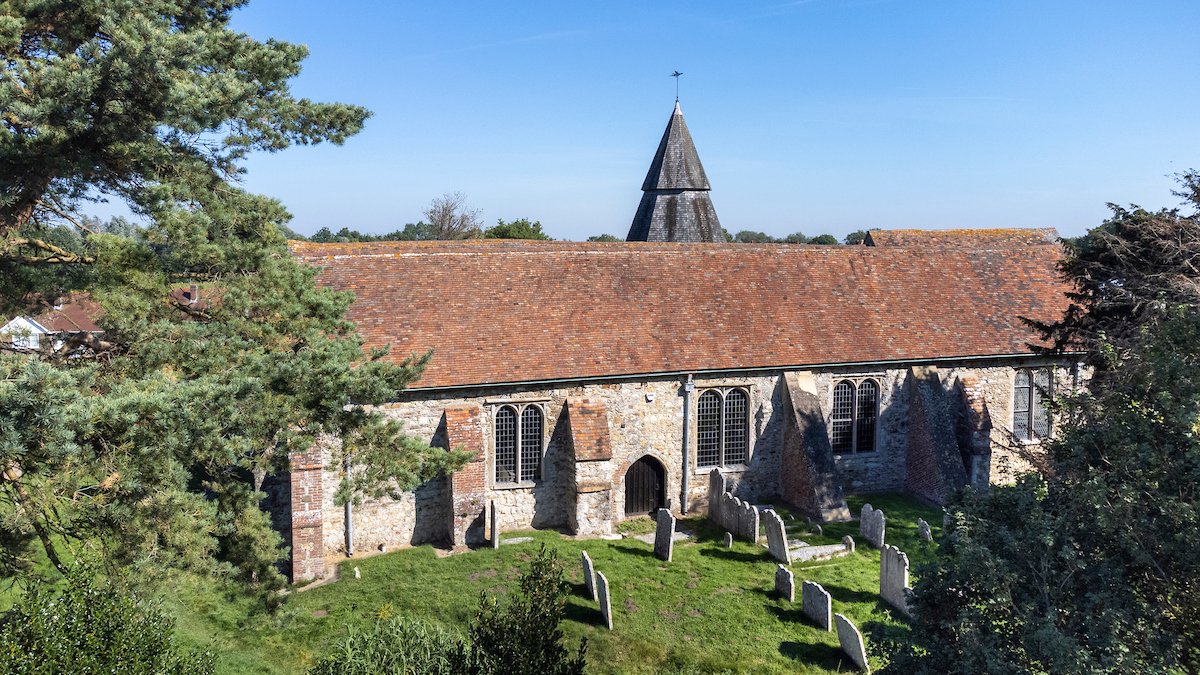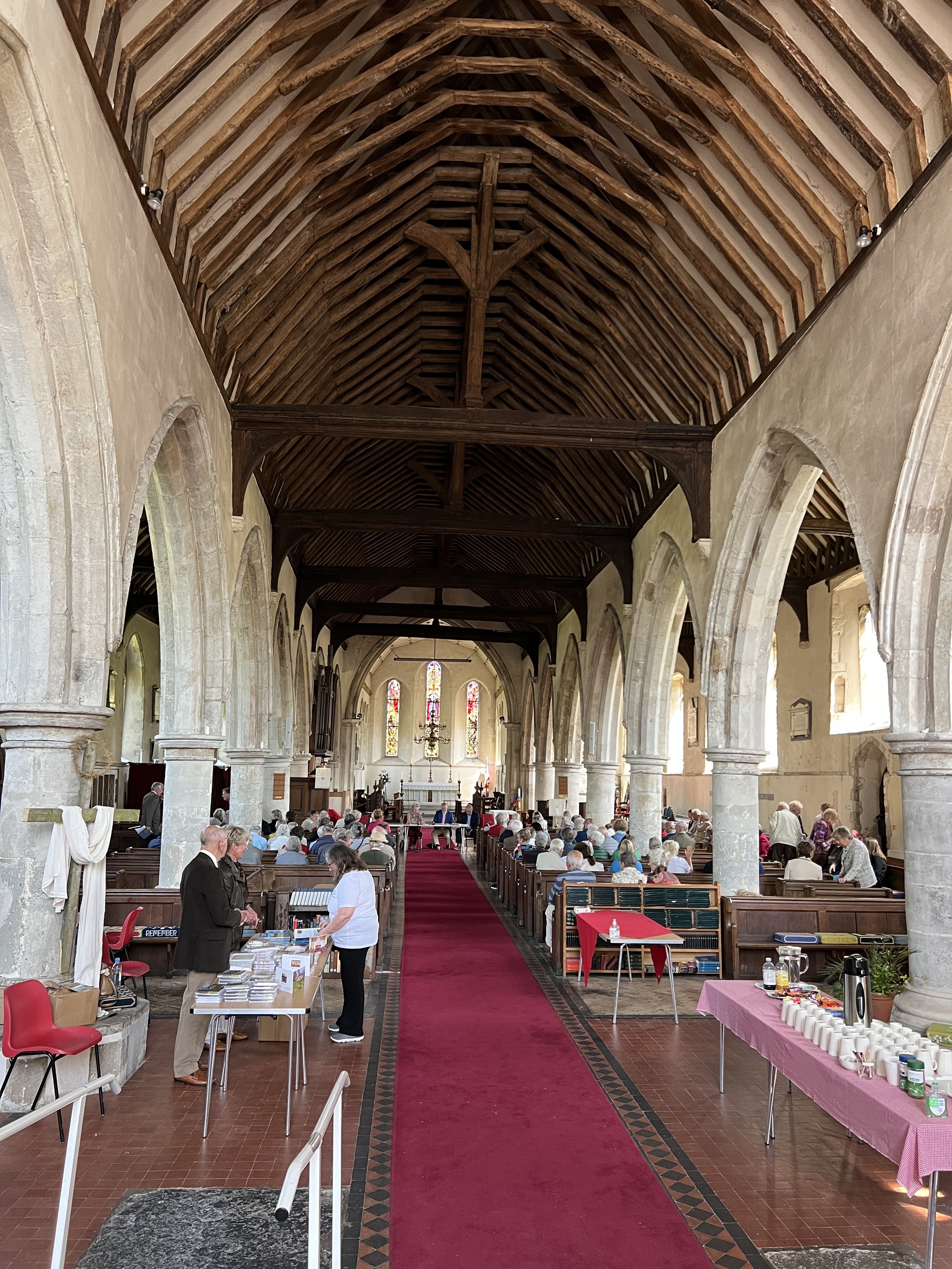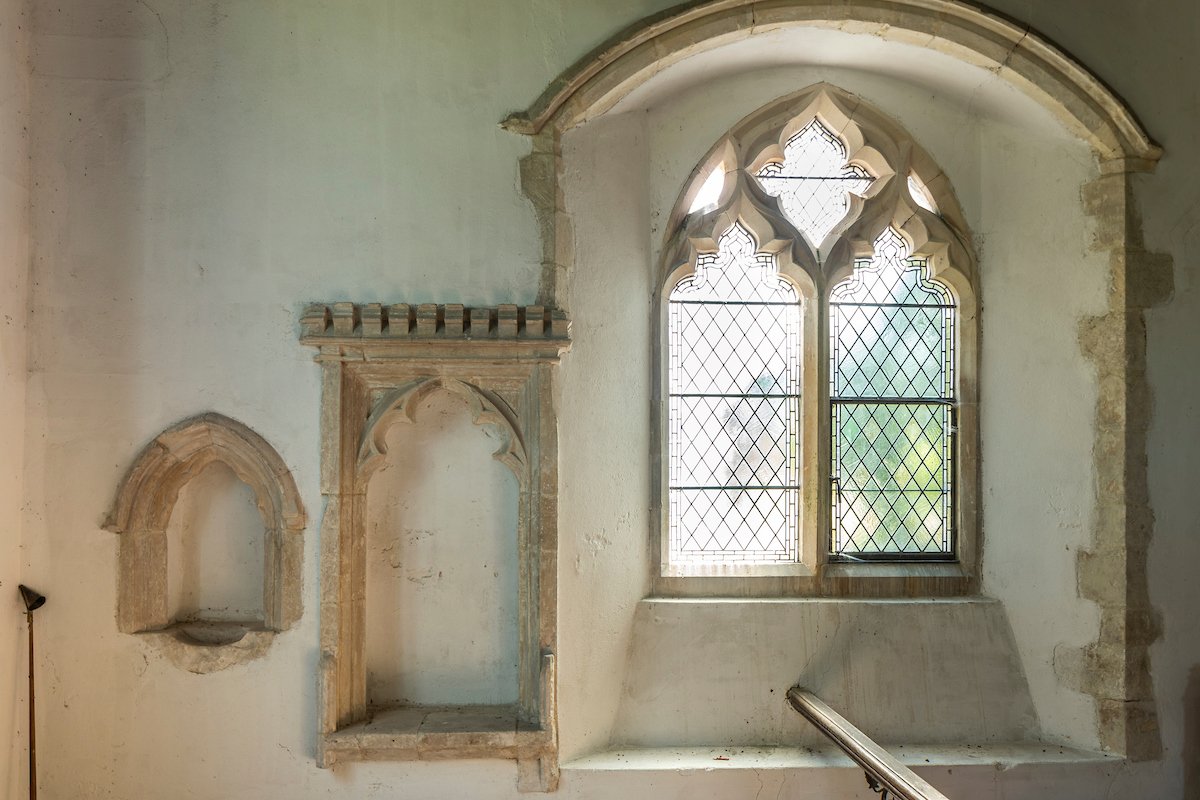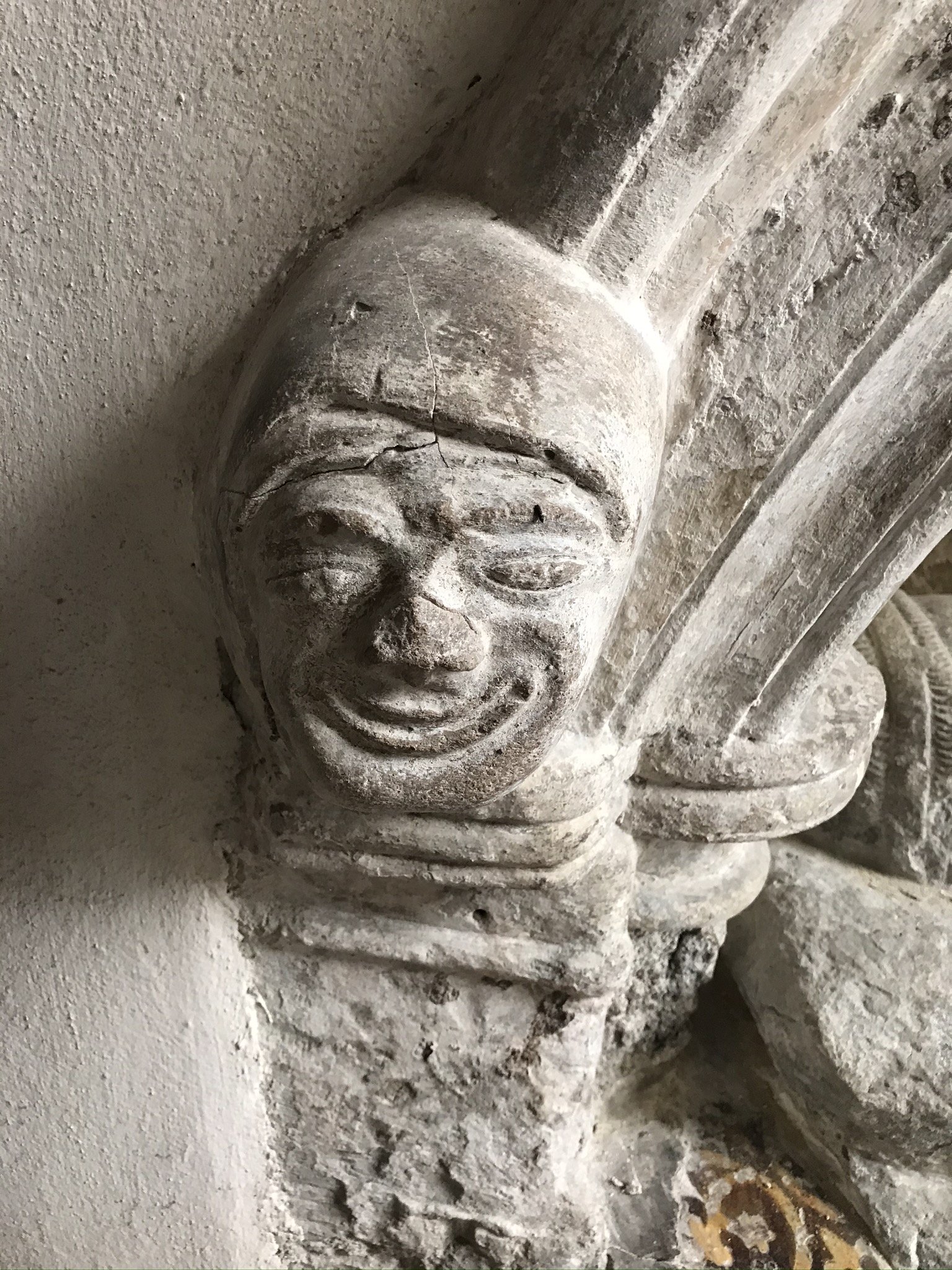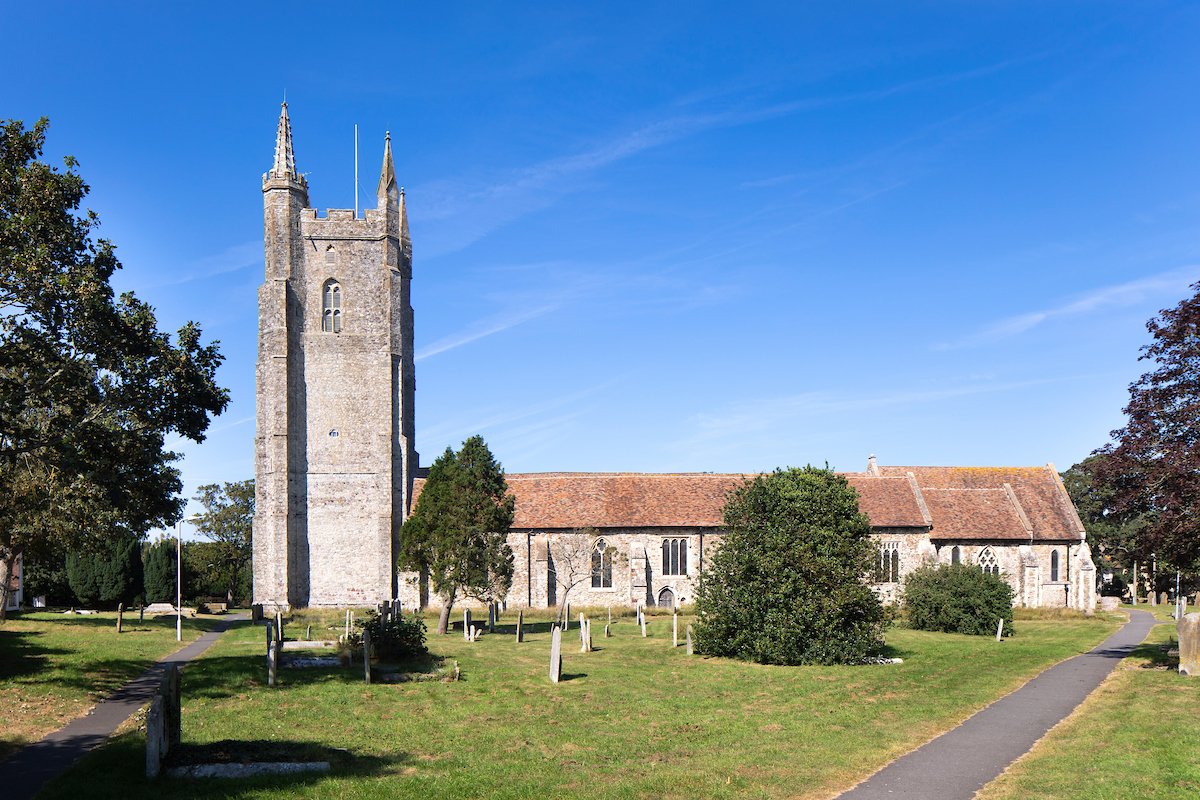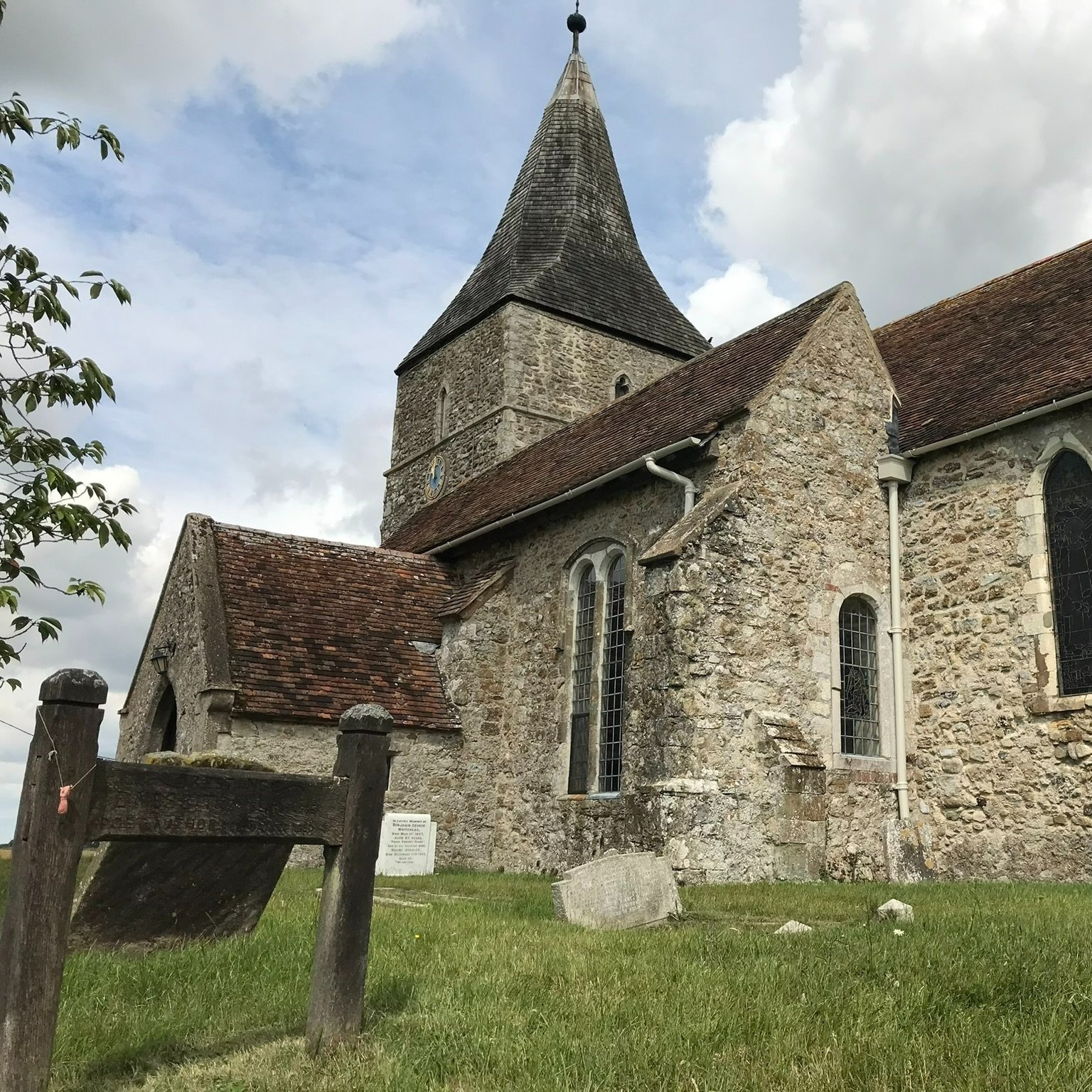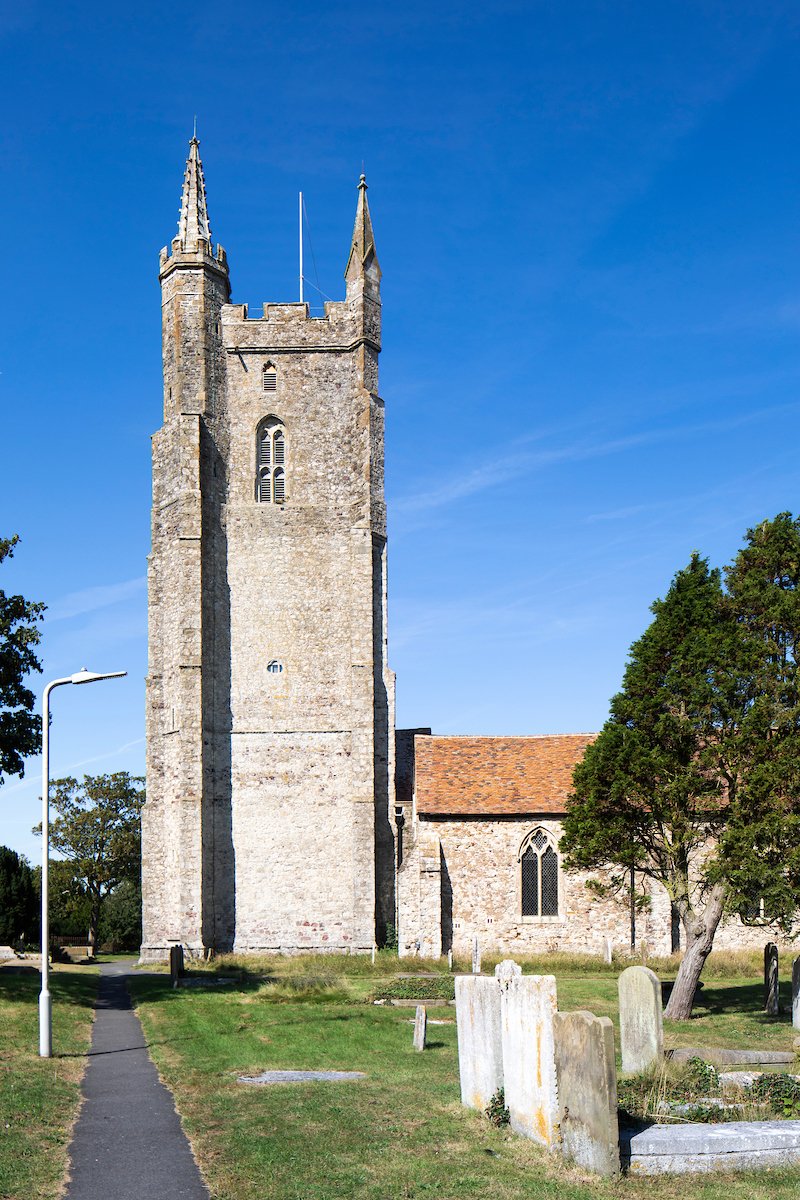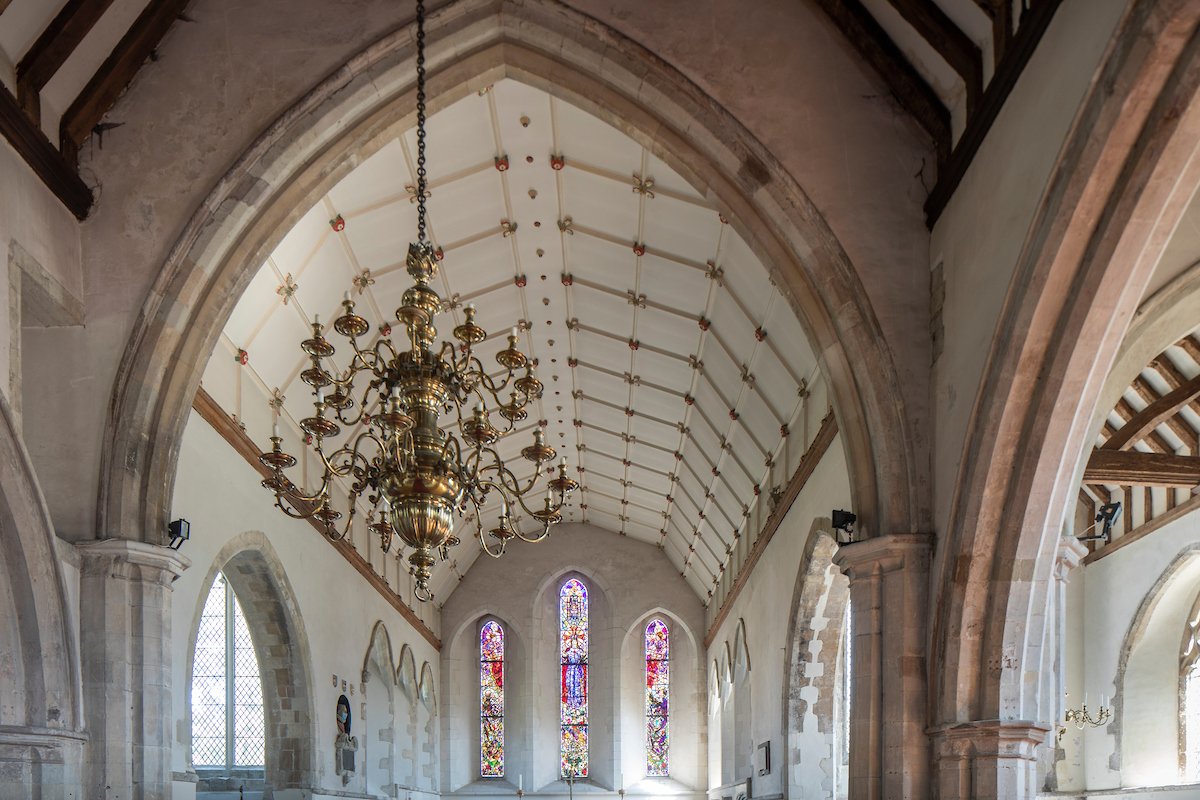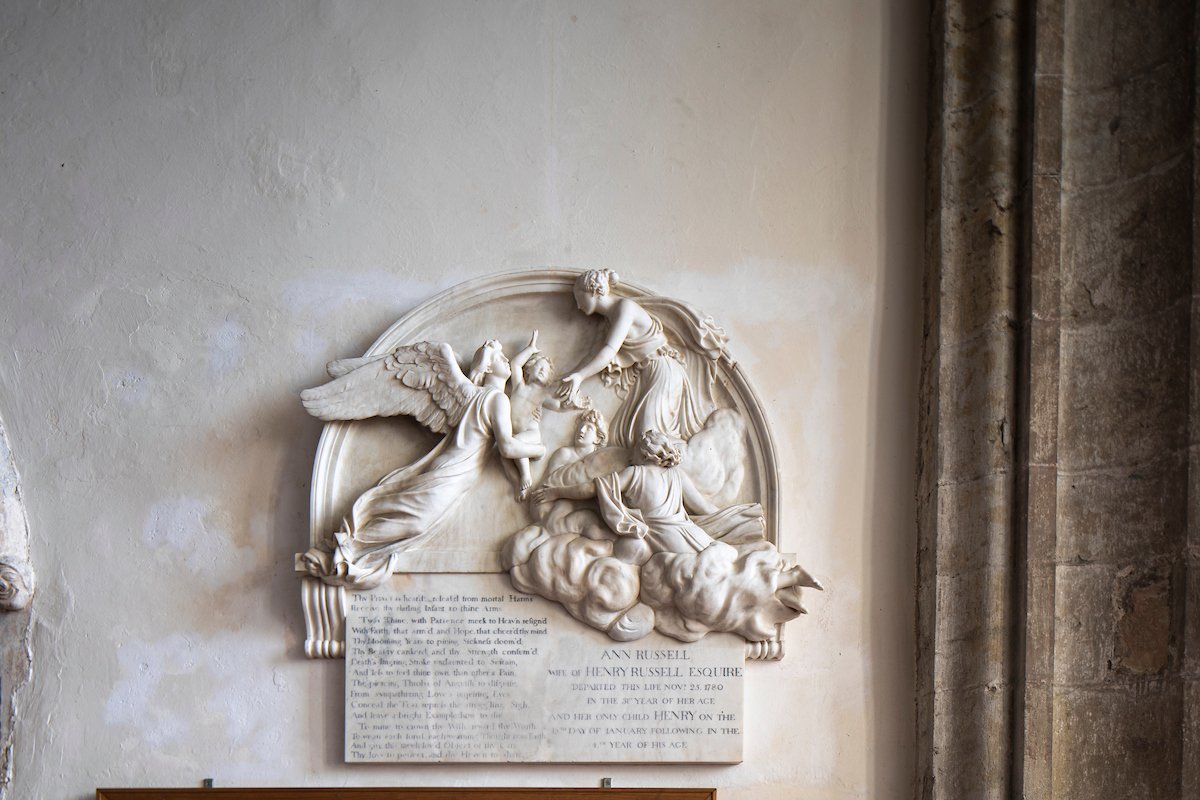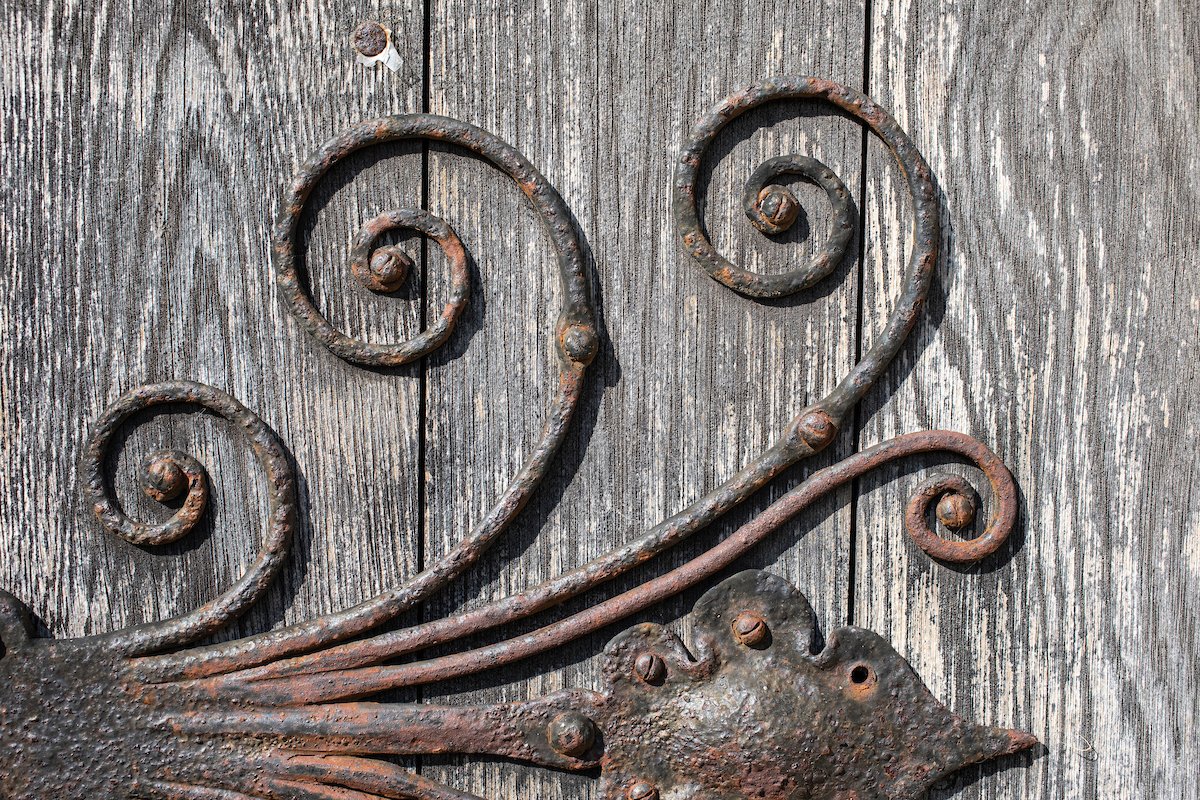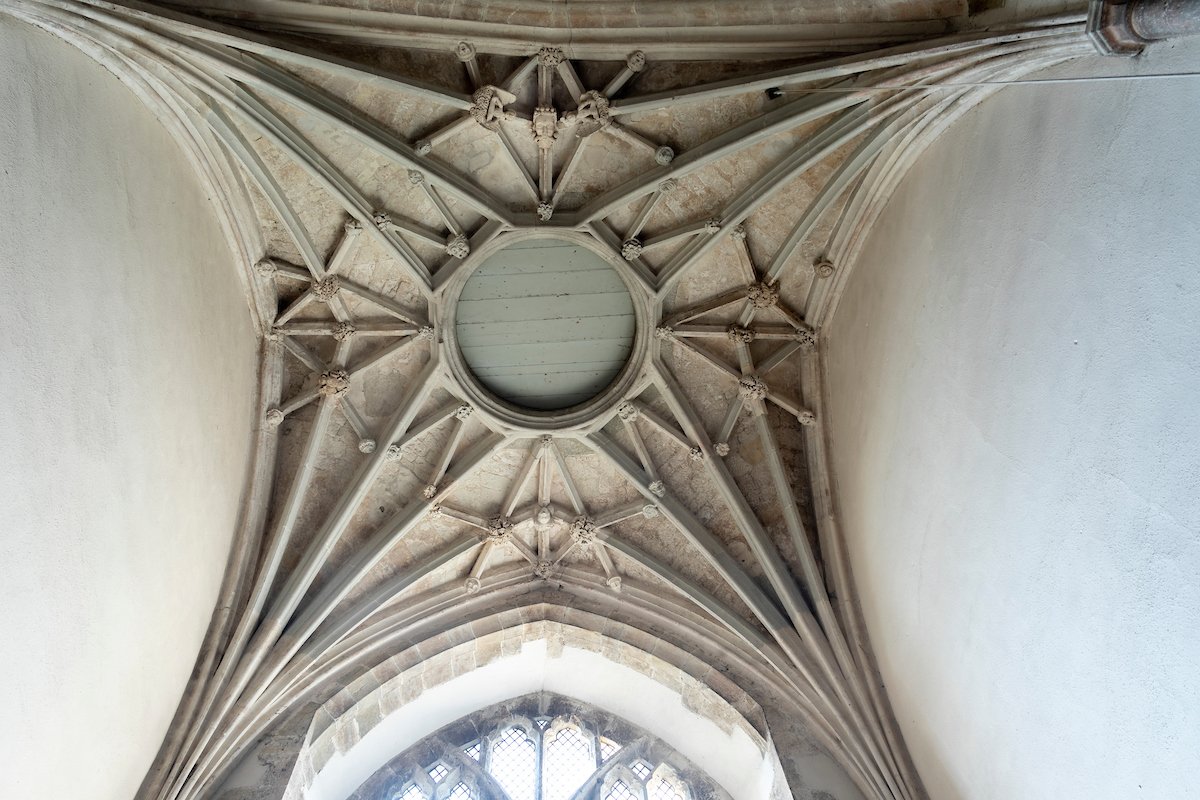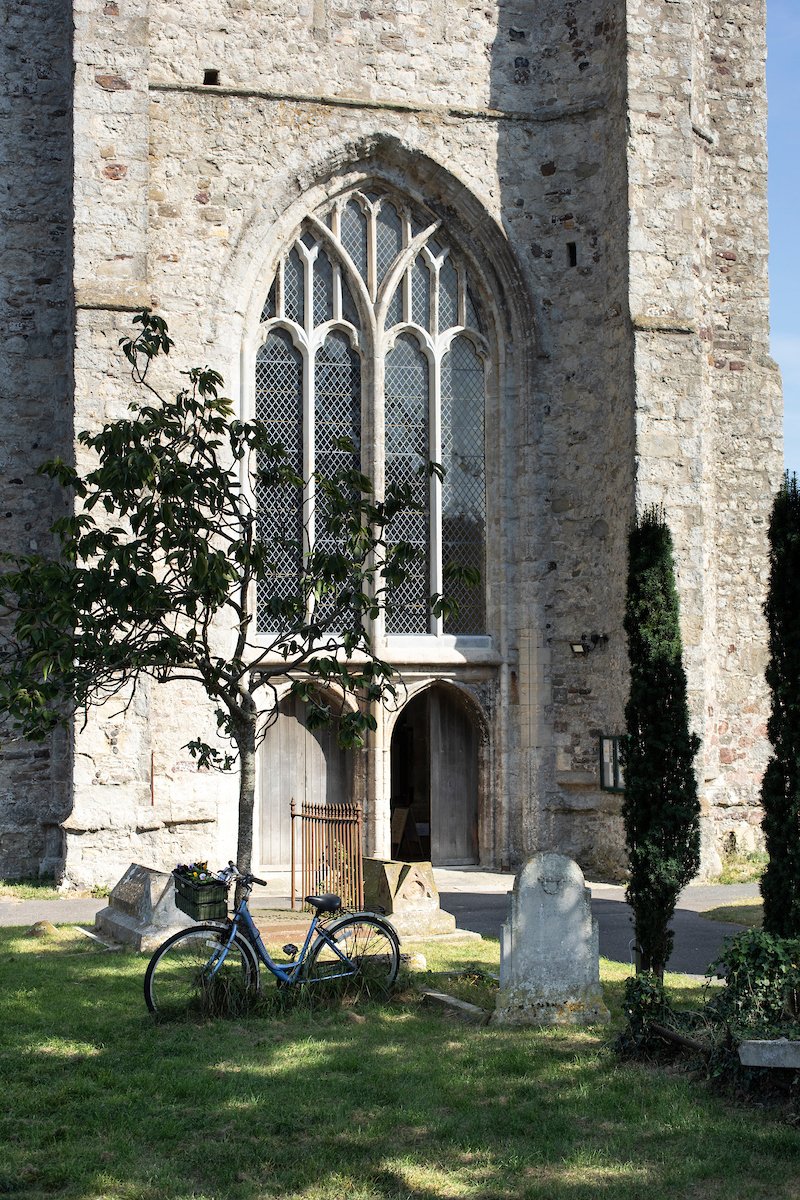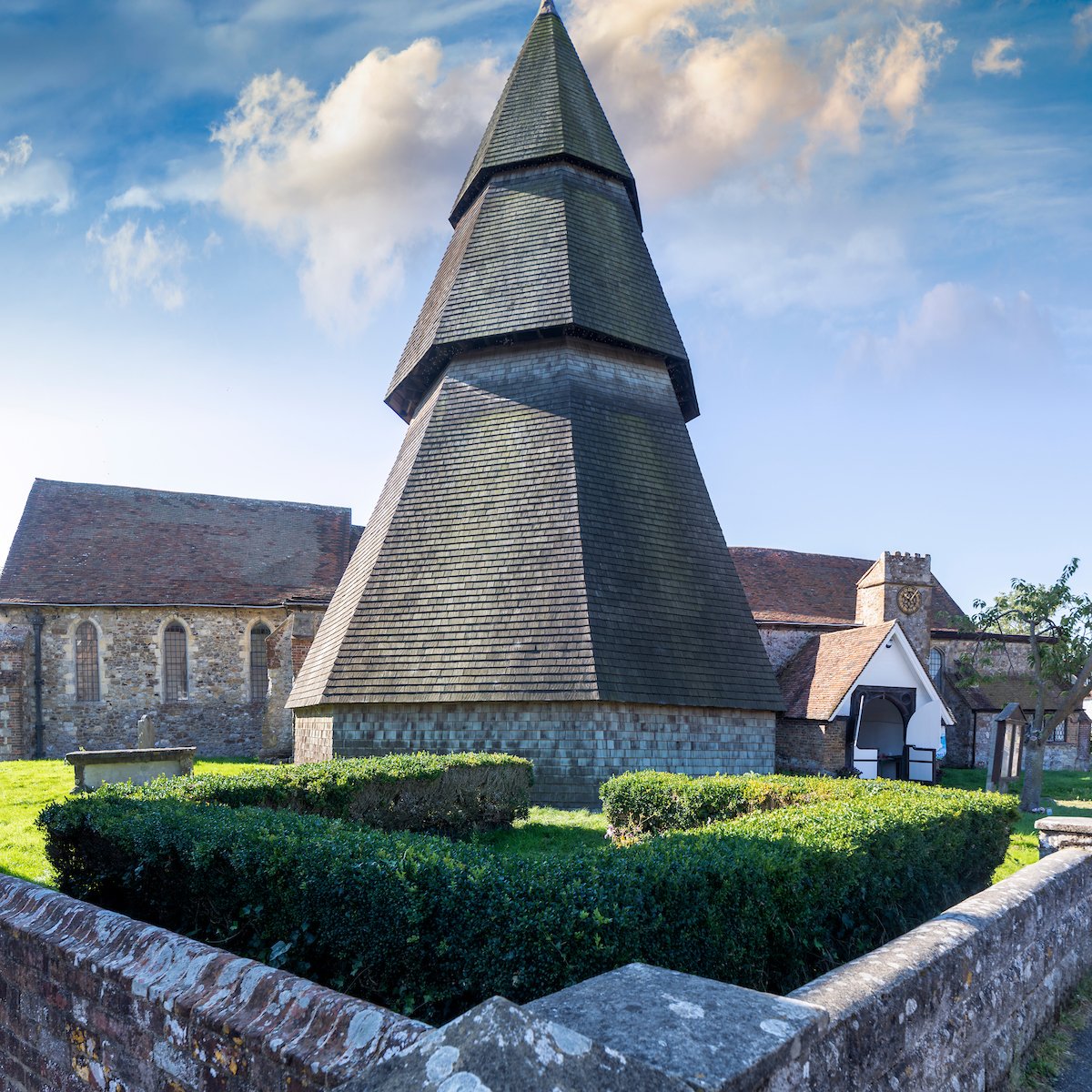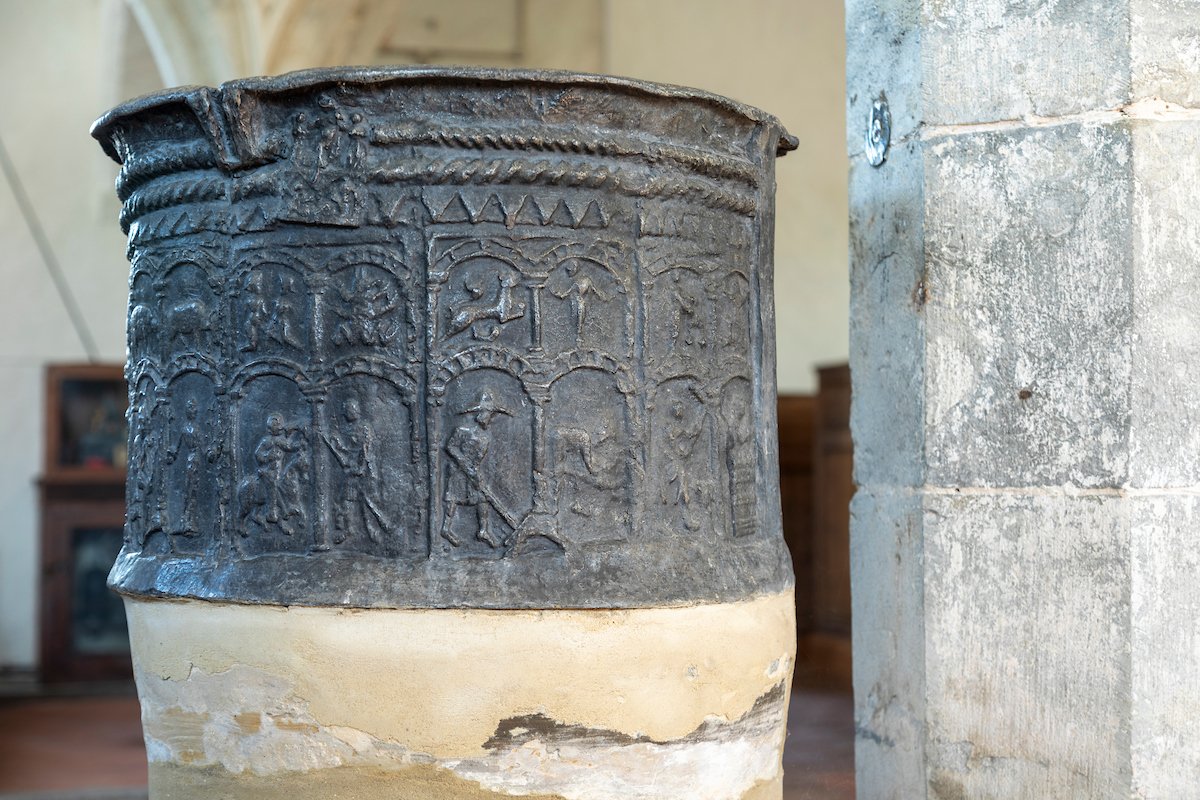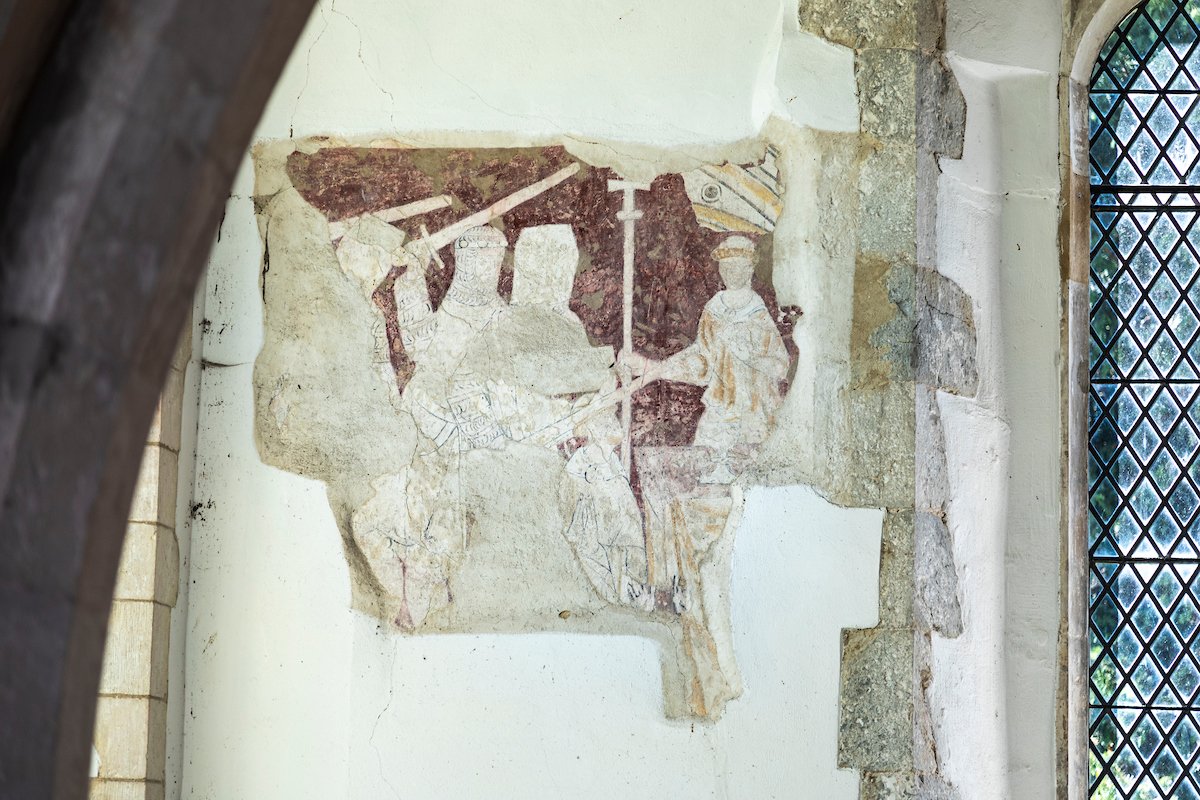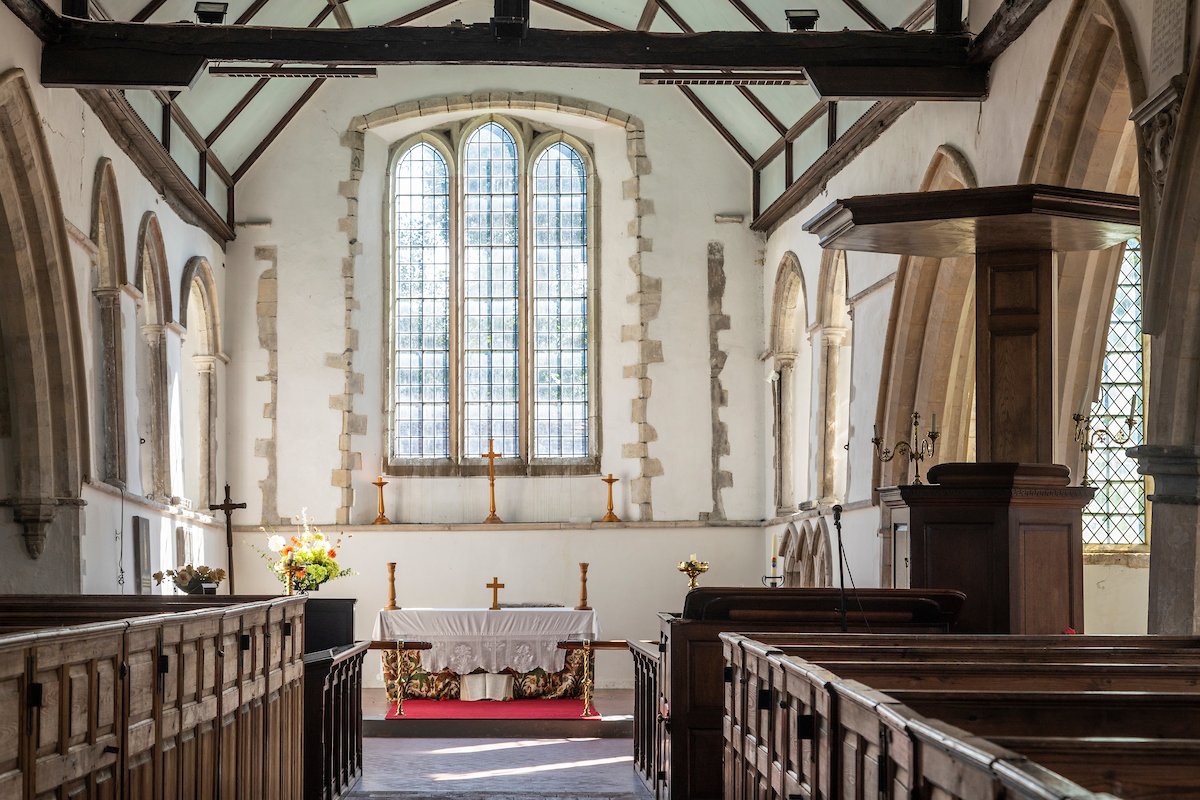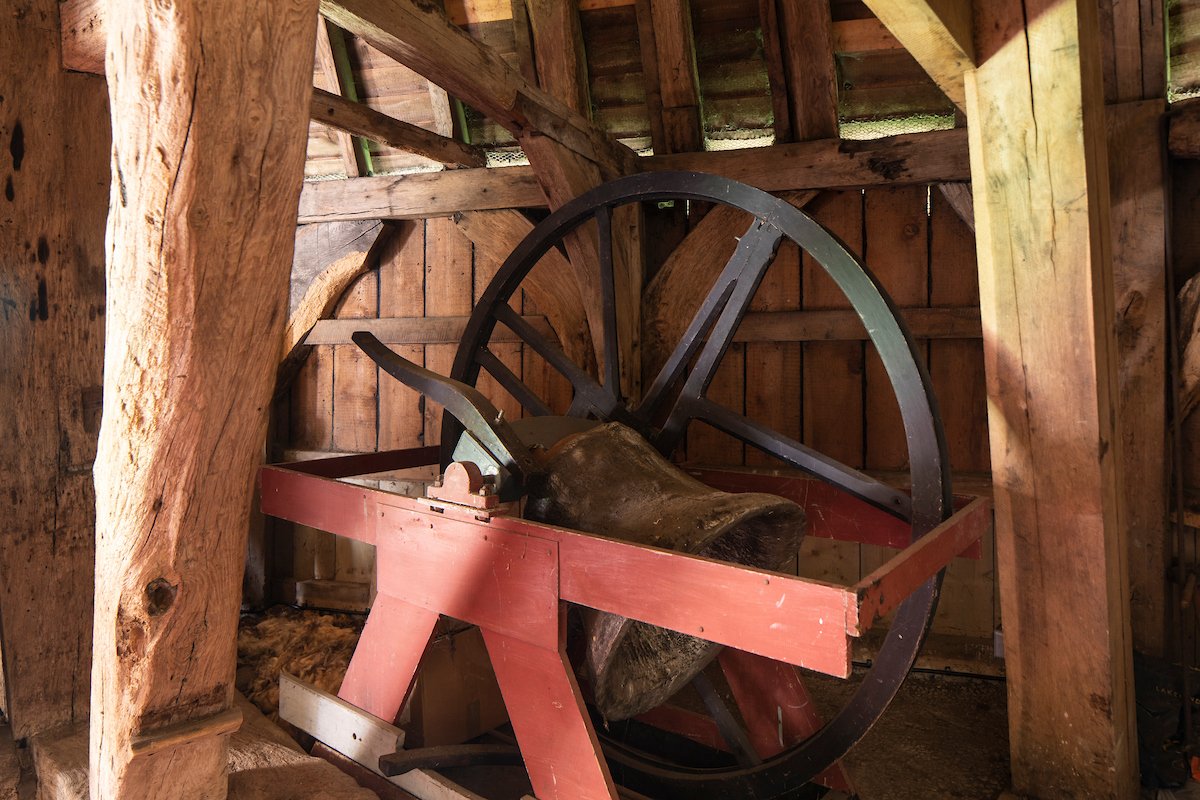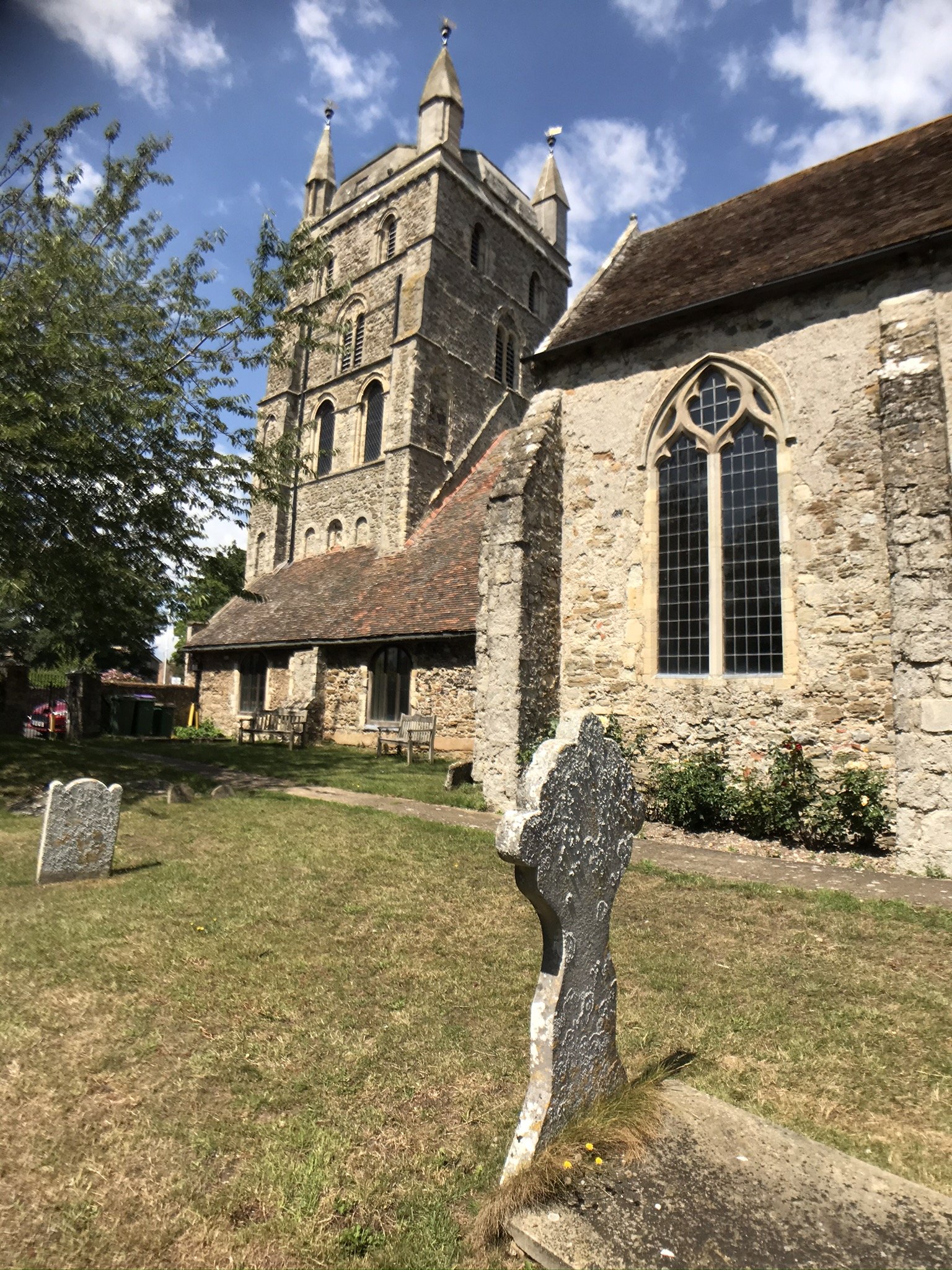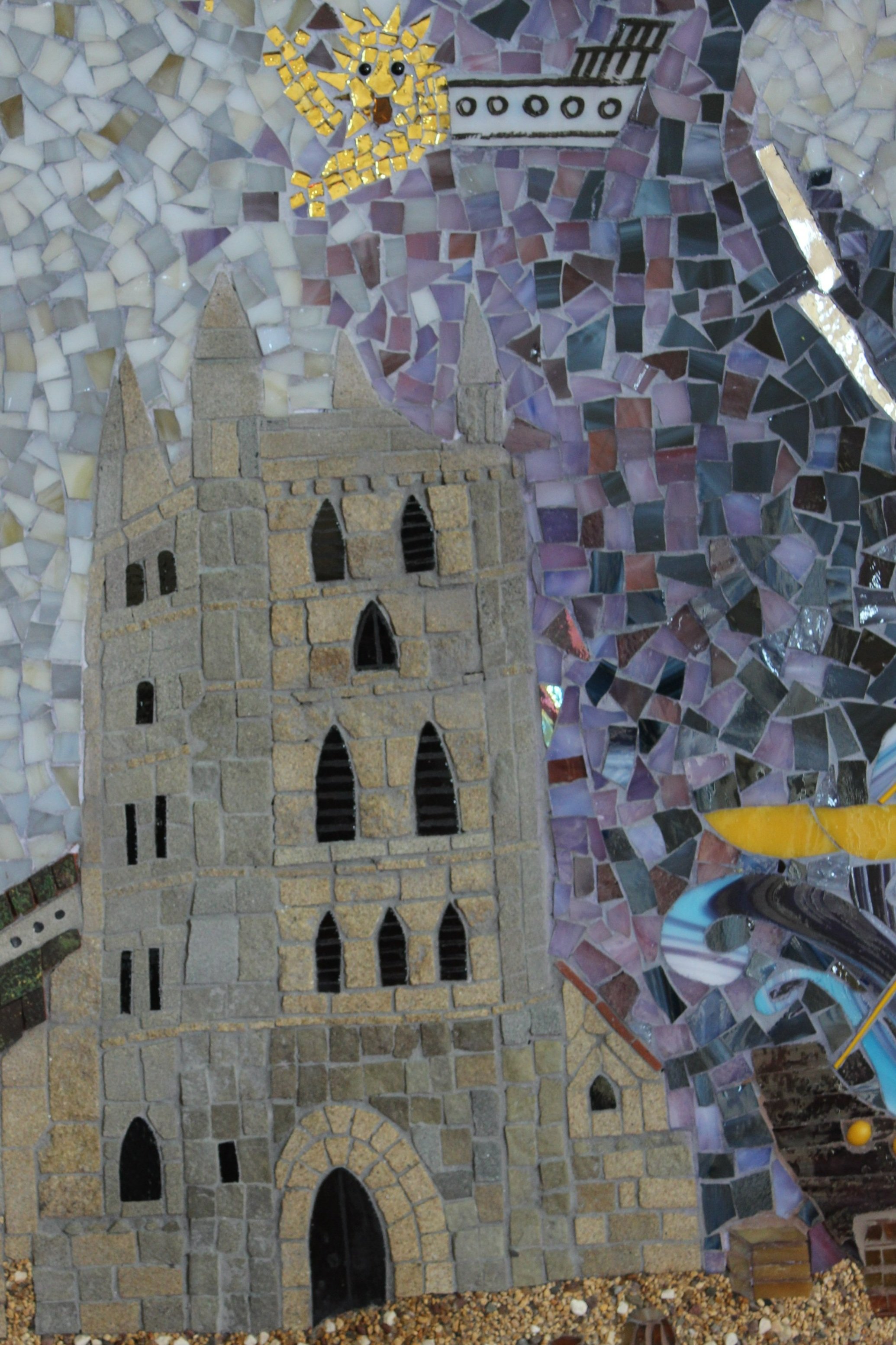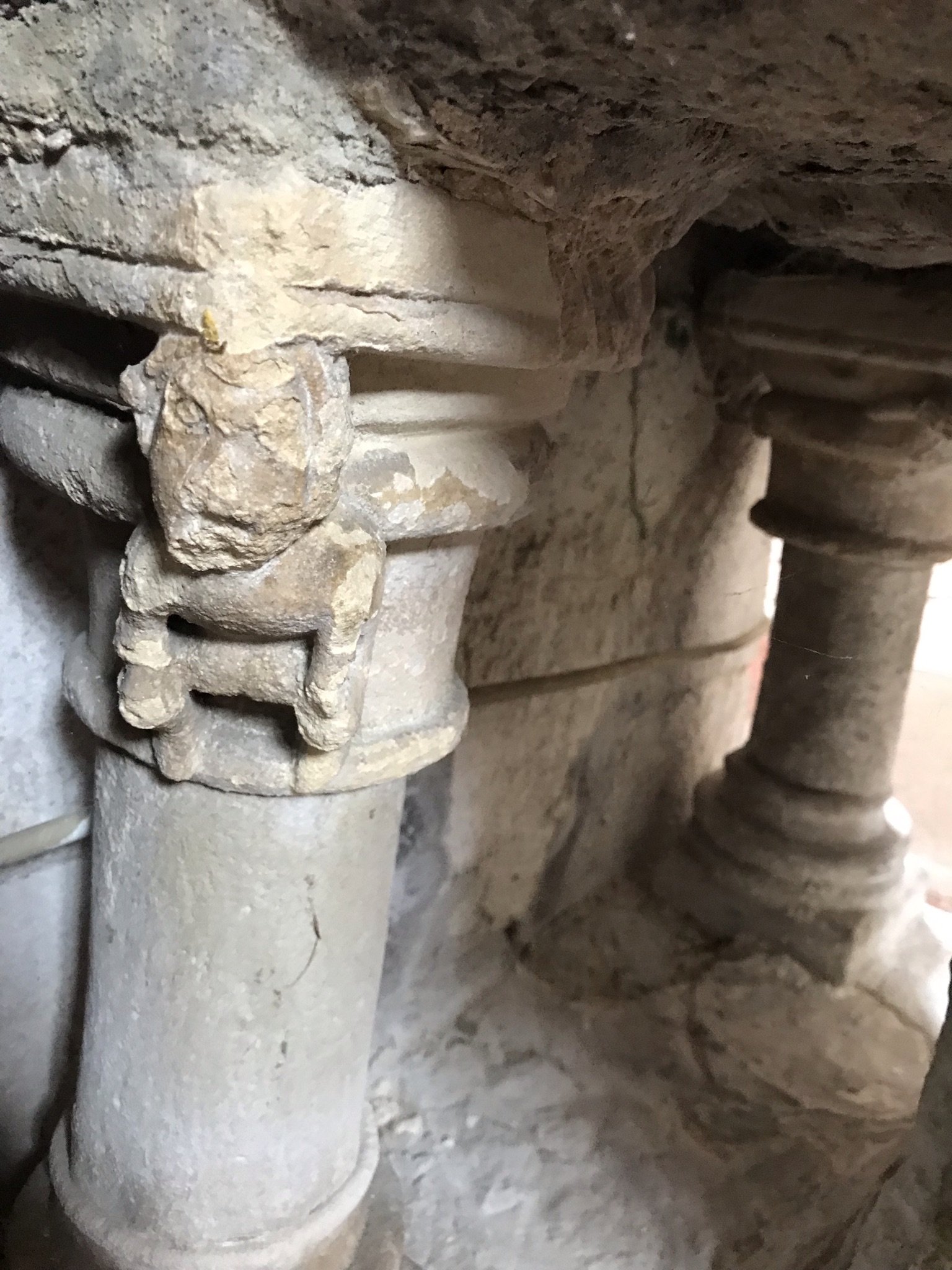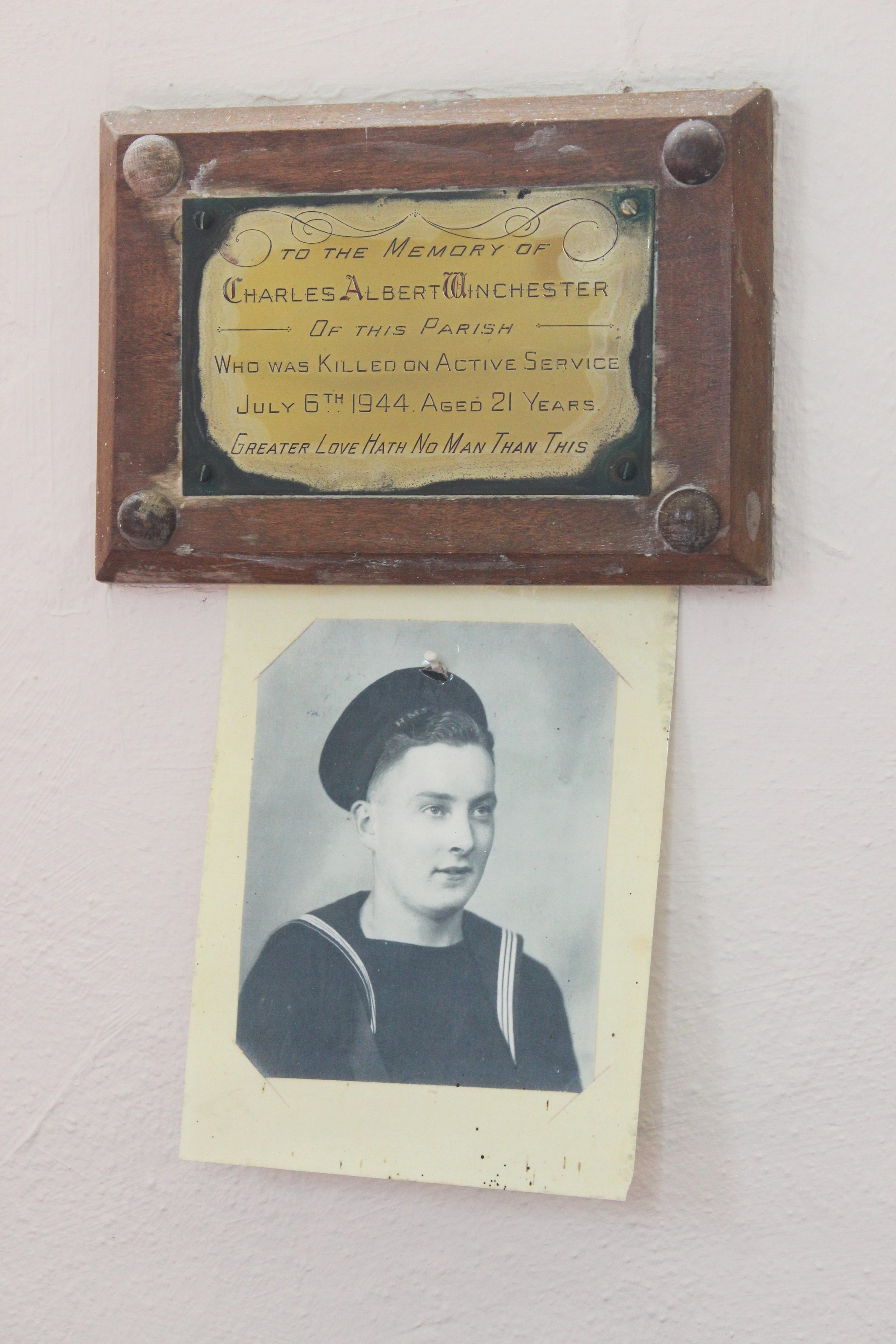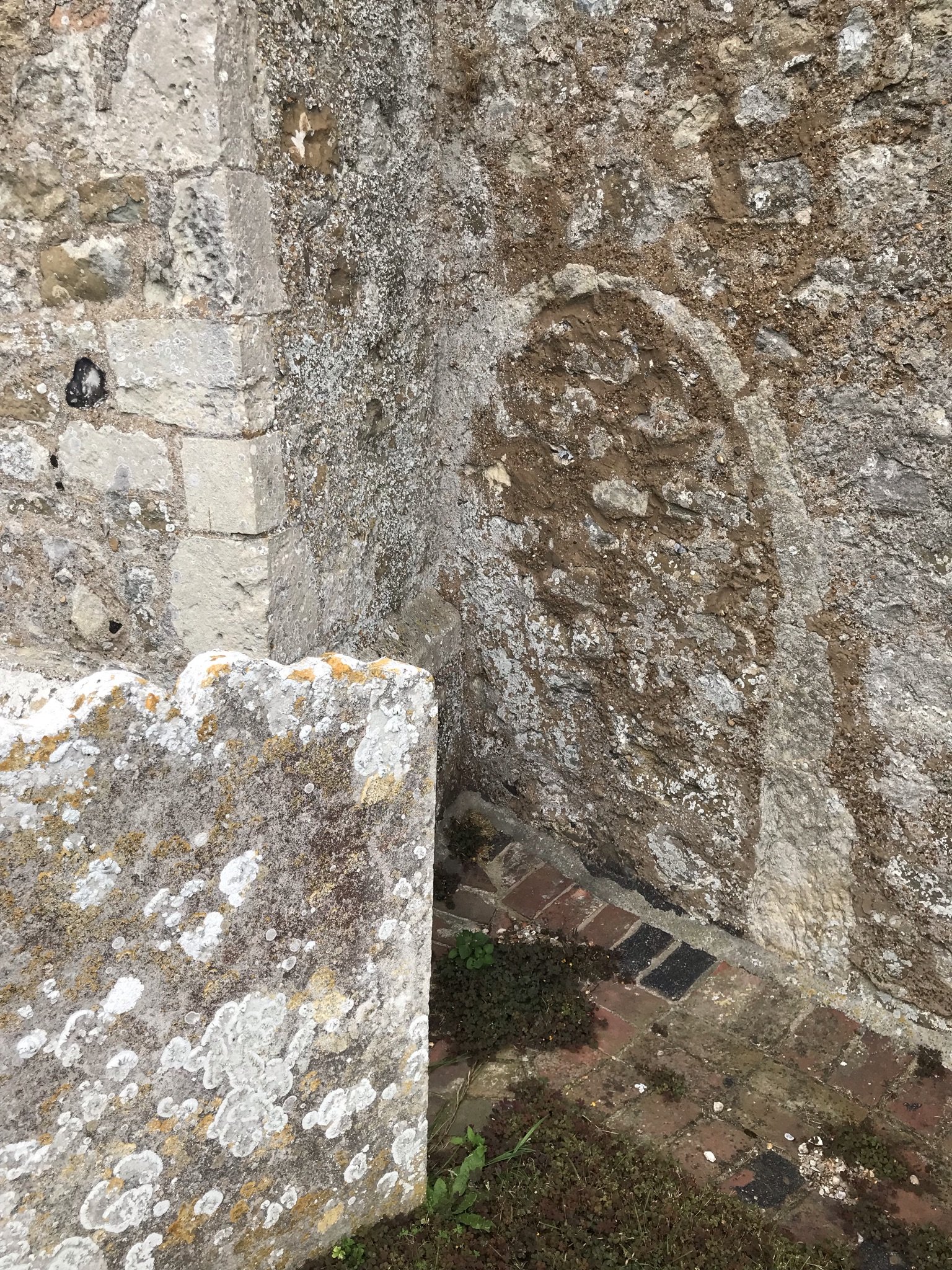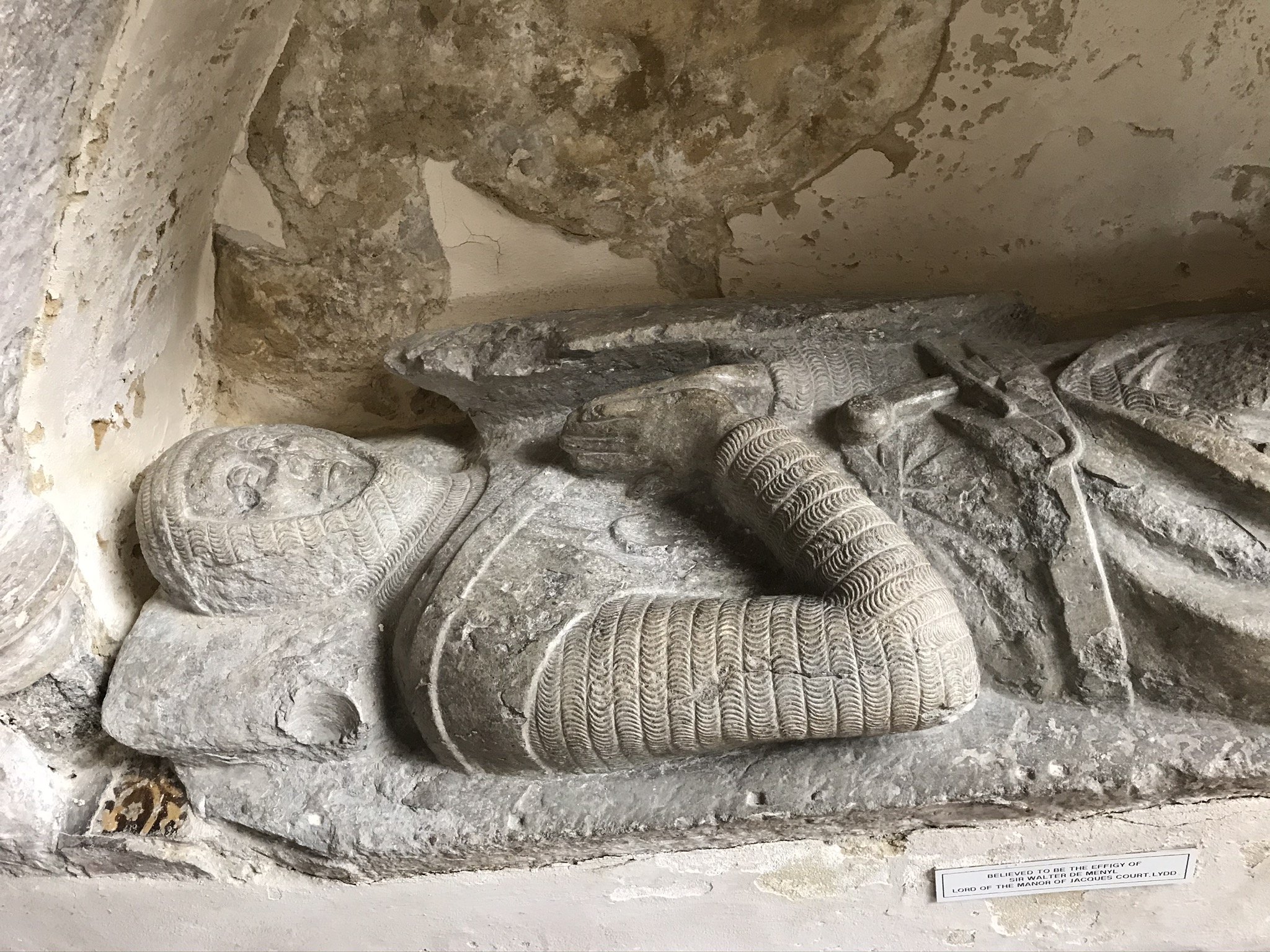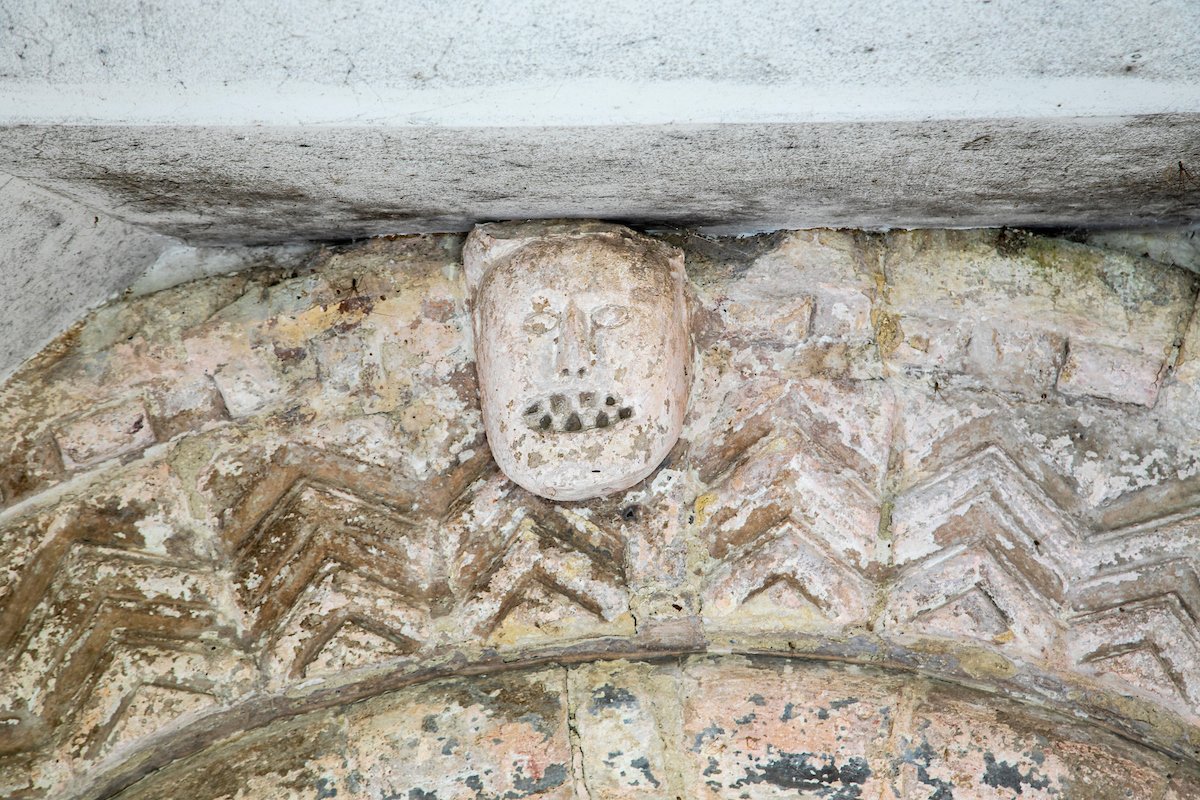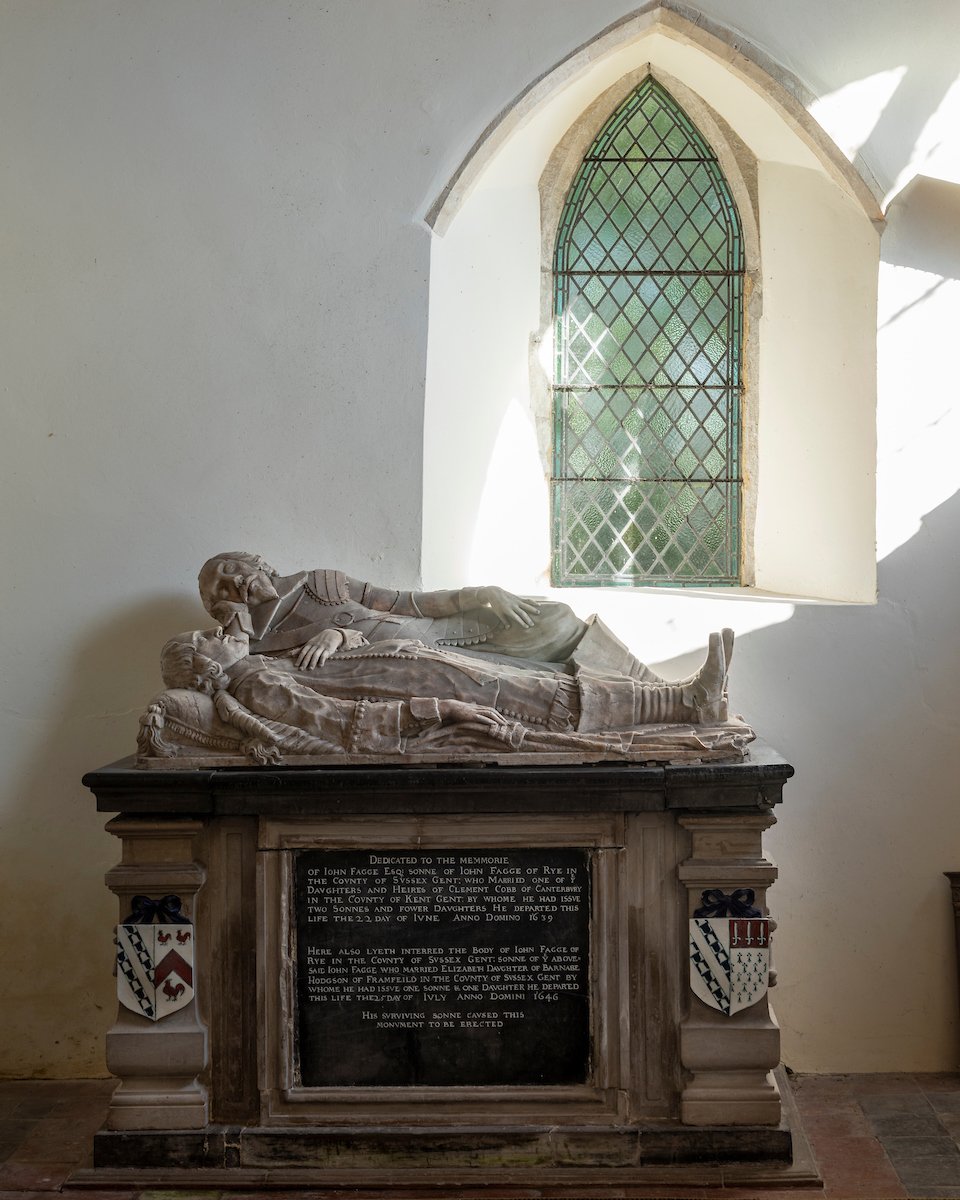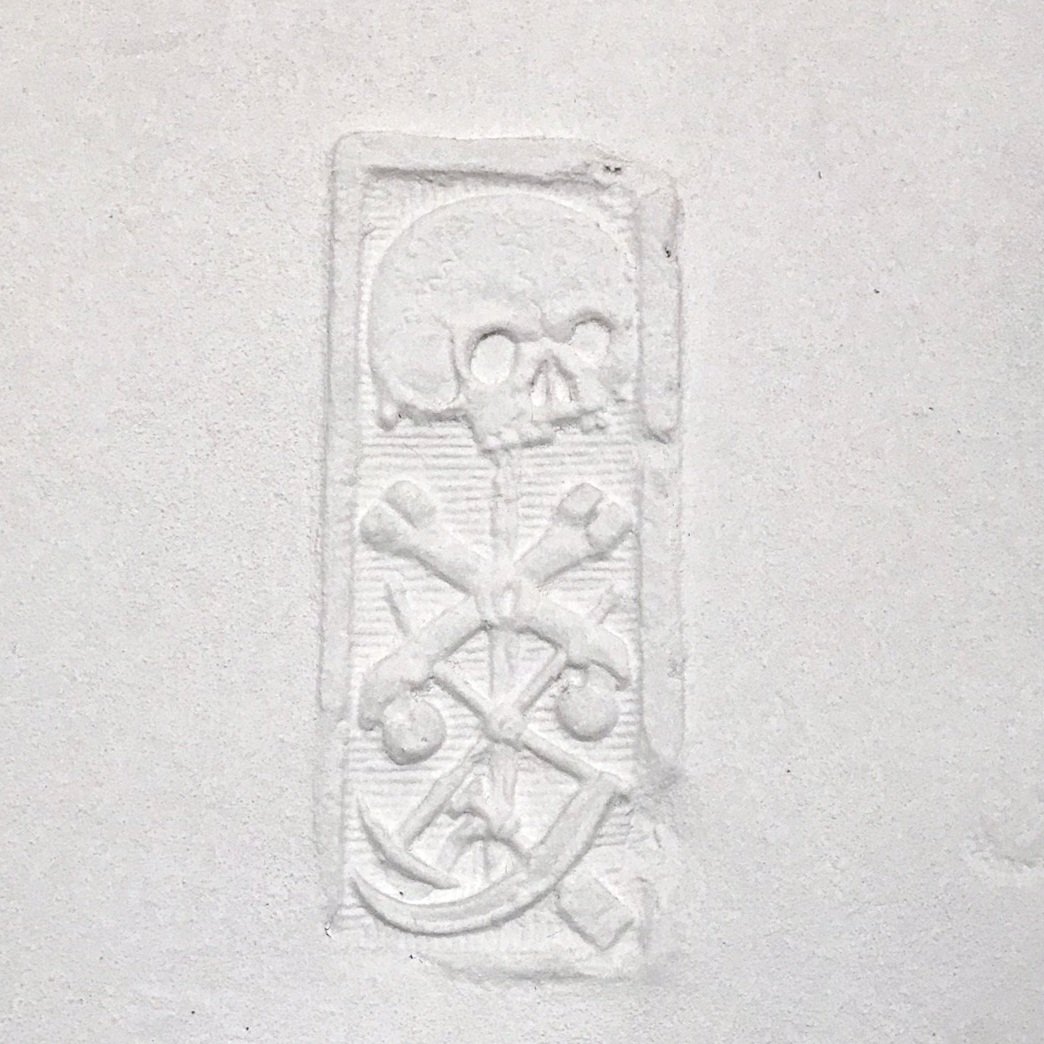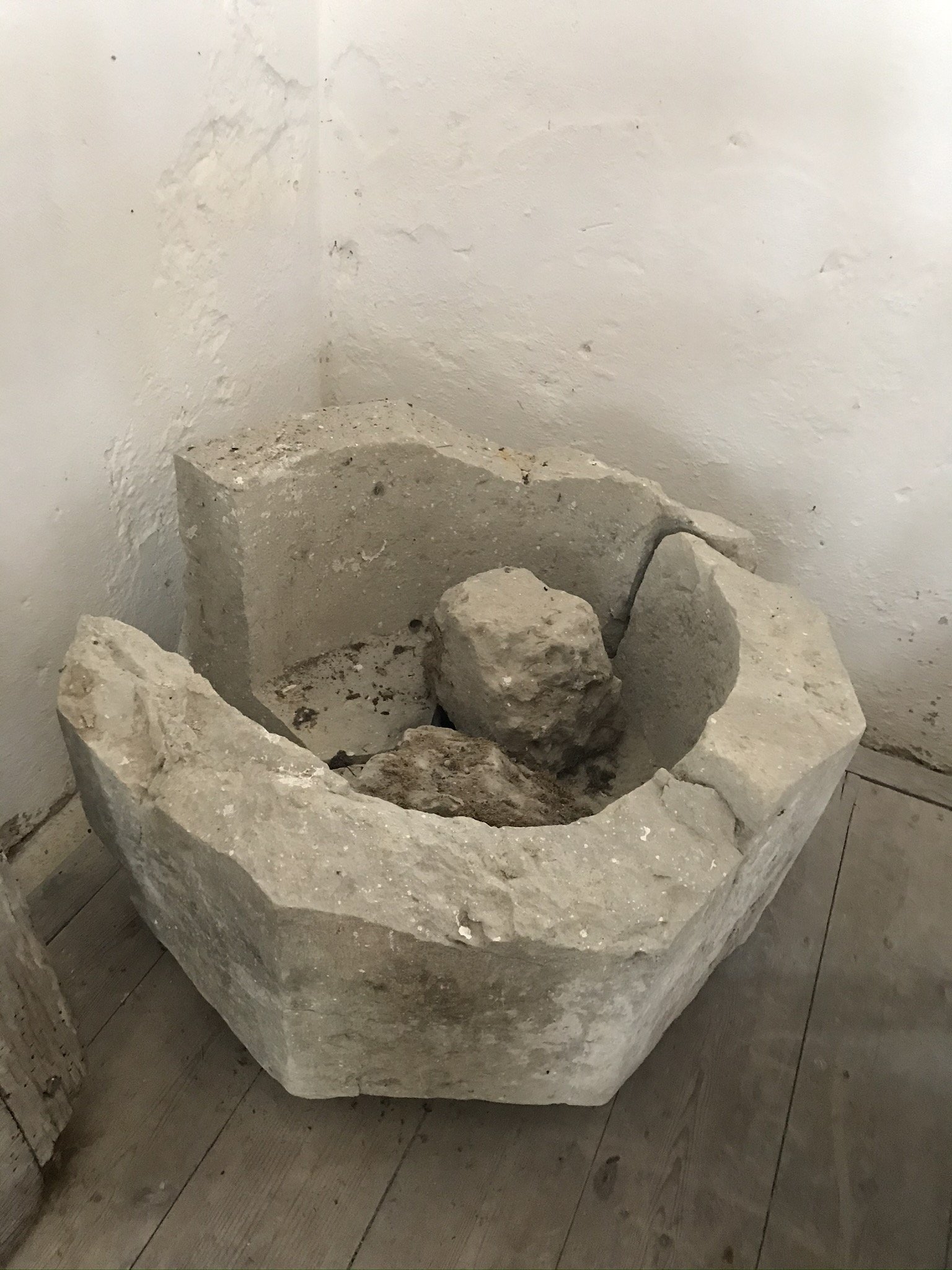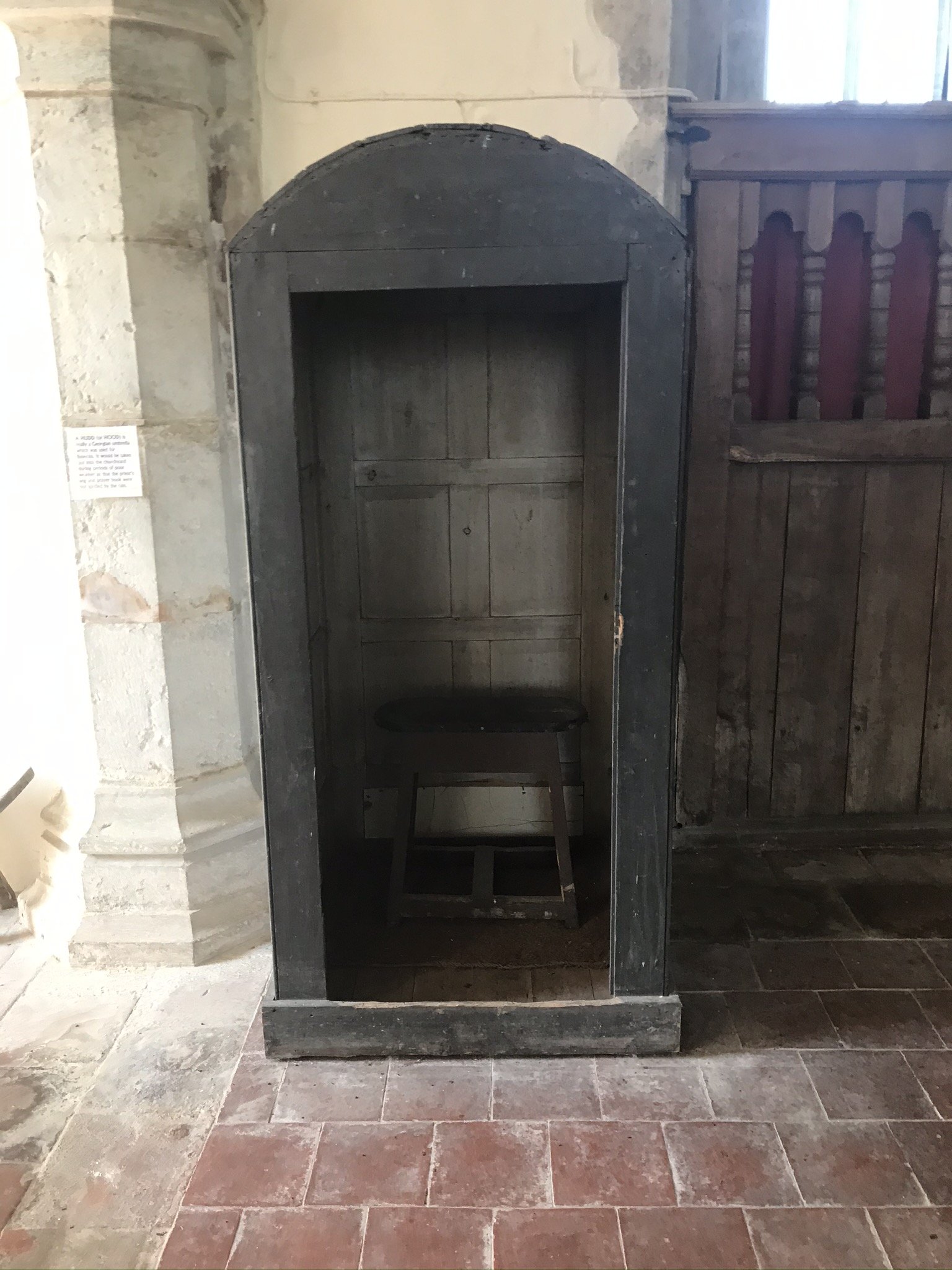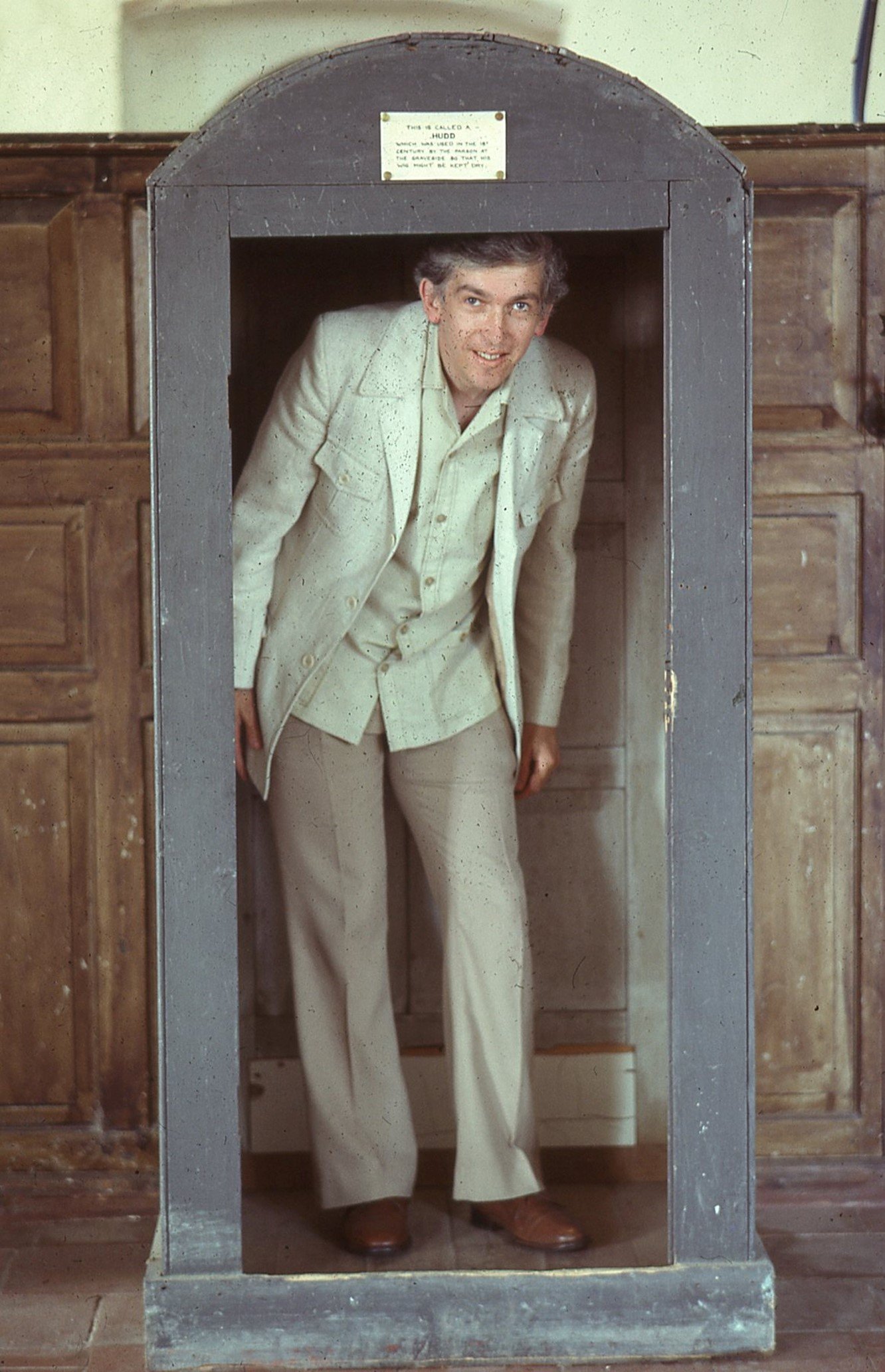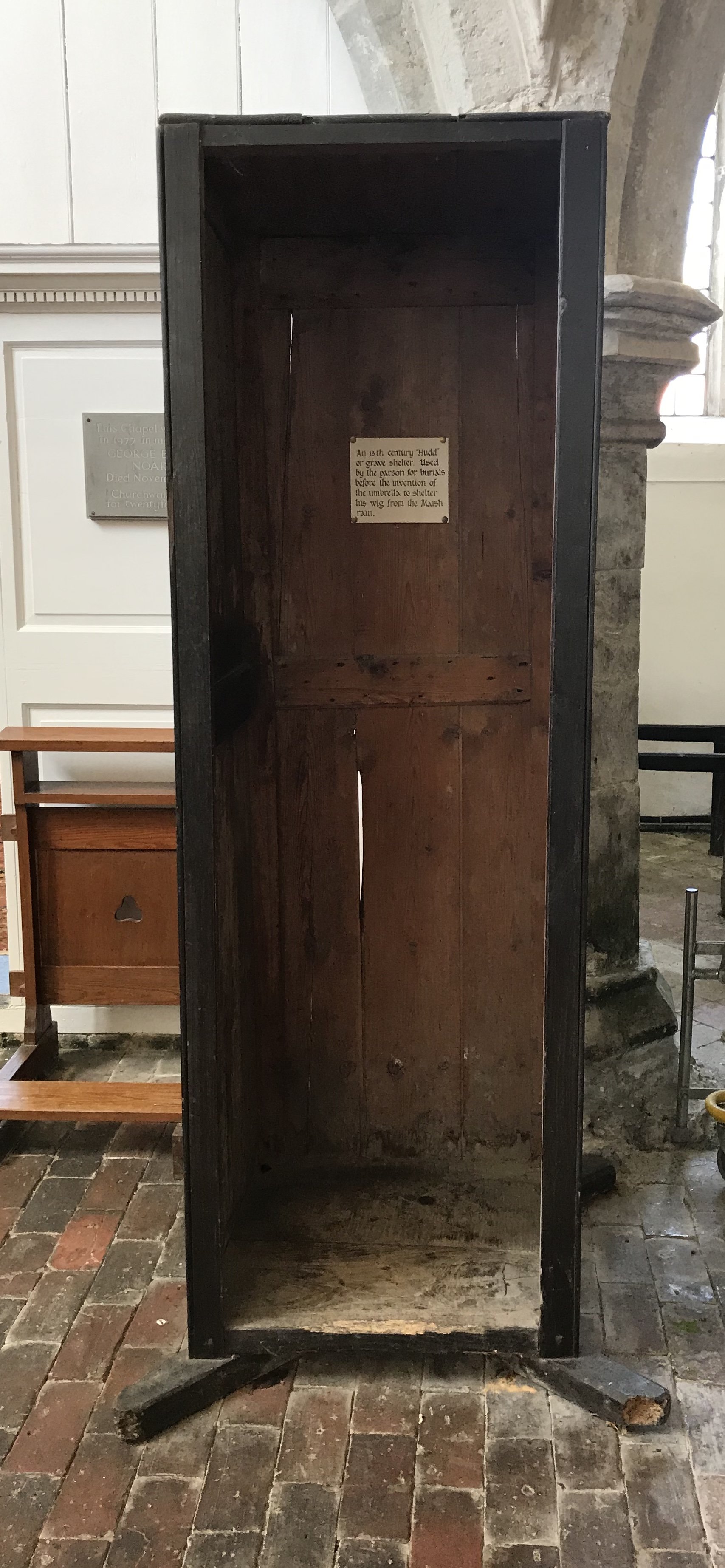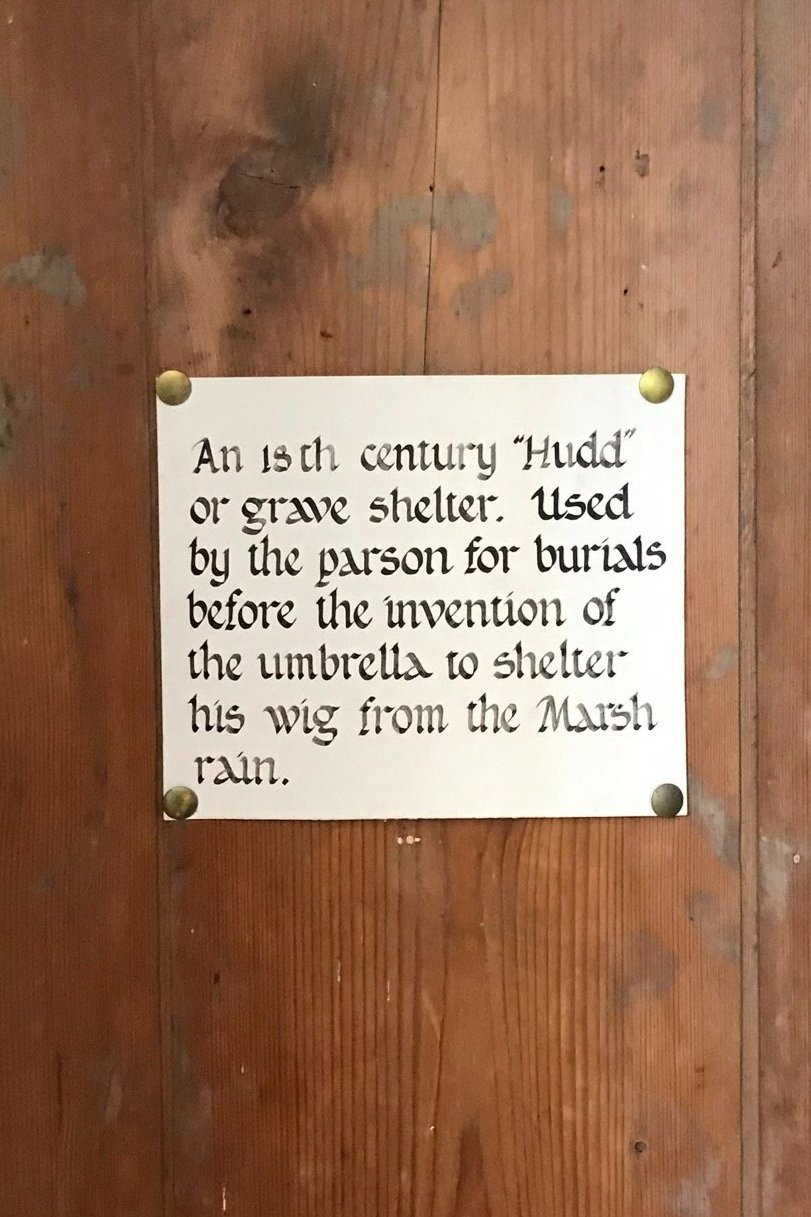Reflections on 40 years of the Romney Marsh Historic Churches Trust, with former Chair Nick Hudd
THIS IS AN ARCHIVED STORY
Continuing our series of articles reflecting on 40 years of the Romney Marsh Historic Churches Trust, RMHCT’s Project Assistant, Didier Rochard, spoke to founding Council member and former Chair Dr. Nick Hudd. Nick has been involved with Romney Marsh Historic Churches Trust since before it became a legal entity. We will learn more about the “pre-history” of the Trust soon, in a forthcoming recollection from Shaun Leavey OBE.
In November 1981 a public meeting was held at St George’s, Ivychurch. Members of the public had gathered to share their concern about the preservation of the ancient churches on Romney Marsh. Dwindling congregations in this isolated rural area, together with worry about the state of some of the buildings, had raised concerns about whether the beloved ancient churches would fall into disuse. This had not happened yet, but it was certainly on the horizon. At the time, the small church at Snave had fewer than ten people in its whole parish.
Nick Hudd was at that first public meeting. A lifelong history enthusiast, then in his mid-thirties, he had visited the marsh all his life and had family across the area. He had always had a natural interest in wider history and, as happens with so many, Romney Marsh and its churches captured Nick’s inquisitive young mind. As an adult, his fascination grew and, alongside a successful professional career in medicine, Nick developed his historical knowledge through reading and private research. Nick does not consider himself a professional historian, but his expertise on the churches is certainly widely known and respected. As Nick says, chuckling he’s, “always had a go at answering the unanswerable questions, which seem to be sent my way.”
In 1979, before the Trust was even founded, Nick gave talks about the churches, and he has been leading tours since 1980. He still leads tours today.
At the public meeting back in late 1981, it must have been clear to Shaun Leavey, who helped coordinate the first public meeting, that Nick’s expertise would be invaluable. Shaun invited Nick to join the Steering Committee there and then, and after a short period of reflection Nick agreed. In May 1982, the Trust was legally formed, with John Doyle as Chair, Shaun Leavey as Secretary and Nick Hudd as the first Vice Chair.
“In the 1970s and 80s the maintenance of the churches was a real issue. They were slowly disintegrating and sinking into disrepair. Disuse was on the horizon,” Nick explains. The church at Snave was at the greatest risk. With no water, utilities or toilets, there was unlikely to be any wider interest in purchasing the building and Nick believes, “it would probably have had to be demolished, for safety reasons.”
An early priority for the new team was raising a sufficient sum for use as an endowment fund, which would help maintain the churches in the longer term. This decision proved very wise, as the Trust’s investments now account for approximately half of its income today. A further priority was to get more people involved and spread awareness. Nick helped write to “anyone and everyone that might be interested in joining or donating.” He admits he was rather sceptical about raising sufficient funds at the time, but the early target of £100,000 was achieved within a matter of two to three years, and the Trust’s capital is now over one million pounds, such is the popularity of the cherished churches. “This initial investment has been very important for maintaining the churches,” Nick explains, “alongside the contribution of our loyal members.”
Nick is a dedicated church-goer himself and a supporter of several rural churches. As well as his endeavours for the wider Diocese, he does a lot of work for the church in Tenterden, where he assists with general organisation and music. Ever generous with his time, it is no surprise to learn that Nick is also Chair of the local History Society there.
On the Trust Council, Nick acts as the liaison for the churches at Lydd and St Mary in the Marsh – two of the most-visited on Romney Marsh.
“The churches serve their communities and it’s good to have a church in every community. Each has an identity of their own and is the focus of the community. However, each church has to find its own role.”
This is so true on Romney Marsh, where fourteen medieval churches serve a relatively small number of parishioners. Each church is unique, not only in its architecture, features and history, but also in its identity and the community that surrounds it. Whether locals are regular church-goers or not, the people of Romney Marsh are extremely proud of the area’s churches, which have served as landmarks for centuries.
After some cajoling, Nick admits the impressive church at Lydd is one of his favourites, but emphasises that they all have something to offer. “All Saints’ at Lydd is the supreme English Parish Church. It has all the features one would expect. The building itself is well over a millennium old, with masonry from the dark ages through to 20th Century and artefacts to match”.
The impressive Cinque Port church at Lydd is the longest parish church in Kent and it has one of the tallest towers. Although the church has been enlarged significantly over the centuries, it now has one of the smallest congregations for its size and this is a concern. A church of this stature is incredibly expensive to maintain. It does, however, attract many visitors and, as Nick points out, “Look again at the Christingle Service or at a concert – they can’t fit enough people in!”
Without the establishment of the Trust back in the early 80s, Nick is certain several of the churches on the marsh would no longer be in use. He makes a powerful statement, which has served the Trust well over the years and sums up their mission:
“If we keep the roofs, walls and windows weathertight, they will stand forever.”
With the impact of the pandemic and an aging population, sadly some of the churches may still be at risk of redundancy in this isolated rural area. Each church must find its way. Some are bustling with weekly services and events, while others are silent, reflective spaces. All serve people in need, whether through worship, sanctuary or a place to learn, rest or think. The church at Snave is now maintained entirely by the Trust and runs only one Church of England service per year. Still, the service is well-attended and the Trust ensures the small church is open year-round to people who need it, or who wish to visit.
Given Nick’s experience of leading tour groups, I ask which ones he believes are the must see churches of the marsh. “Lydd.” he replies immediately. “And Fairfield of course – most of Kent would say the same! Brookland too. After that it becomes more difficult – they all have something and it really depends what you’re interested in.”
Nick explains that he finds the buildings and their stories particularly interesting.
“They are feats of engineering! Brookland is slowly sinking in the marshy ground, hence the leaning columns. They probably built the bell tower separately for that reason - bells are incredibly heavy things.”
Bell-ringers from all around the world now come to ring the bells in the freestanding octagonal belfry at Brookland. Recent research has shown the internal frame structure may once have been open to the elements before it was covered with shingles. It is this fascinating, inseparable relationship between the churches and the unique landscape of Romney Marsh which captures the imagination of so many. Several of the churches were built on islands. Others served ports that are now landlocked, or villages which have since been lost. Some large churches reflect the enormous wealth of patrons, landowners or conquerors, while others have only ever served small hamlets or isolated farms.
Many of the churches were used by smugglers, as made famous by Russell Thorndike and his Dr Syn adventures.
“Many people find the literary connections fascinating – Thornedike, E. Nesbit, Kipling etc. For others it’s artefacts or stained glass. I’m not an expert on stained glass, but I do think the East Window at Lydd is an absolute masterpiece.”
Nick references the glass by Marc Chagall that can be found at Tudeley church near Tonbridge and suggests that Lydd’s east window is comparable in magnificence. Among its many artistic features, the church at Lydd also boasts an impressive sculpture by English sculptor, illustrator, and designer John Flaxman - a leading artist of the Neoclassical style in England – positioned just inside the unusual double doors of this “Cathedral of the Marsh”.
Click play for a preview of our 3D Virtual Tour of All Saints’ Lydd. You can explore other churches here.
The Trust has supported significant work at Lydd in recent years as highlighted on our Projects page. Do any projects stand out for Nick, I wonder?
“It’s the whole work that’s important. Things get done and then another church becomes the focus for a while.”
Most of the churches are currently in a good condition thanks to the support of the Trust and its members. Still, Nick highlights the concern that some will probably need new roofs in the years to come, “and that will be a six or seven figure sum!”. The Trust must therefore continue its vital work to raise funds and maintain the churches - especially given the weather extremes found in this marshy corner of Britain, which was once open to the sea.
Thanks to local experts like Nick, the Trust also continues its work to educate people about the history, architecture, features and folklore of these fascinating buildings. Nick acknowledges the history expertise within the Trust’s Council and supporters; John Hendy who led tours for so many years and has recently retired, leaving an excellent audio guide as a legacy; also Joan Campbell who has helped author some of the Trust’s books about the churches; and Celia Heritage, a newer Council Member with a great interest in local history through her involvement with Brenzett History Group. The Trust regularly receives historical enquiries from all over the world and volunteers like Nick help find the answers.
International interest in the churches is something which the Trust has helped to champion. Nick recalls, in the early days, receiving donations from the US: “The New York Times ran an article about the churches, written by Benedict Nightingale and something in the article wasn’t quite accurate.” He spotted this as a potential opportunity and wrote a letter to the newspaper to correct the fact, accompanied by a plea for donations to the Trust. “Any excuse to promote the Trust and the churches and I’ll take it!”. To his surprise, the New York Times published the letter on Christmas Day 1988, shortly after Nick became Chair of the Trust. In consequence, donations began to arrive – “ we get support around the world from people with family connections to the churches and local links.”
Today, the medieval churches attract many international visitors. Nick recently showed a journalist from a Michigan paper, The Morning Sun, around several of the churches. Just last year, The Guardian Travel highlighted several of the churches and associated education projects in an article, including The Marsh Mosaics and audio guides.
Nick states that he, “wants to see the Trust continue to prosper”. By making the most of modern technology, including pioneering 3D scanning, the Trust is now bringing the churches to new generations anywhere in the world. The churches are a valuable free learning resource. To his knowledge, Nick is the only Trustee to have taken school groups around the churches, though this is something the Trust wishes to expand. Recalling a tour for neurodiverse teenagers, Nick explains the youngsters were fascinated by the history; the layers of history, centuries old, captured within the architecture and artefacts.
“They have numerous strange features and many legends associated with them, often with an element of historical truth. This sparks the imagination for people of every age.”
The Trust encourages and supports many non-profit organisations to run tours of the churches – a discussion is currently in progress with Epsom Art Society, for example.
I ask Nick if there’s anything he feels particularly proud of and he reiterates that, “It’s the whole work”. His dedication to the Trust for over 40 years is incredibly inspiring, as is his extensive knowledge about the churches and Romney Marsh. There is no doubt that without the dedication of Nick and the Trust’s other long-serving volunteers and supporters, some of the churches would by now have been lost.
We round off our conversation by sharing excitement that Dame Joanna Lumley has recently become a Vice President of the Trust. The Council Members are extremely grateful to have had the support of such distinguished supporters and AGM speakers over the years, which have resulted in many memorable moments. I’ll leave it to Nick to tell you The Tale Of The Eminent Clergyman and The Knight of the shire, or the conversations he shared with former Vice President, actor Sir Donald Sinden. Nick was invited to speak on BBC Radio Kent after Sir Donald’s death in 2014 and had some anecdotes to share. He has at times acted as a spokesperson for the Trust.
Given his forty years of dedicated service, Nick is a recognisable face on Romney Marsh and he’s always delighted when people ask after the Trust and the churches, as happened recently in Lydd following the AGM. Nick hopes others will follow his example in the years to come, “We’re not short of excellent ideas but we do need members, volunteers and donations to help make it all happen.”
The large church of St Goegre’s at Ivychurch was used by smugglers to store their contraband.
Finally, of all the thousands of unique, rare and ancient artefacts and features within the fourteen medieval churches of Romney Marsh, two hold a special significance for Nick Hudd. Within the medieval churches at Ivychurch and Brookland, stand two rare Georgian structures made of wood. In yesteryear, these one-person shelters were used to keep the Vicar dry in wet weather, while conducting burial services at the graveside. Most of Nick’s family have been photographed standing inside one of these structures over the years. Nick recalls the moment when his son, now a consultant surgeon himself, expressed with glee the sheer delight of seeing “a Hudd in a hudd!”. With all the work Nick Hudd has done to preserve the historic churches of Romney Marsh, long may this family tradition continue!
Where to next?
Help preserve the medieval churches for future generations: Become a member; Make a donation; or Volunteer with us.
Learn more about the churches with our Church Audio Tour App.
Author: Didier Rochard
